1 - Centenary Vehicles |
| |
| |
1905 - Krieger Electric K1 Type - Exhibit : Musée Compiegne
|
The Electric cars produced by Krieger have been known as the most largely produced electric vehicles in Europe at the time. Production started in 1898. By 1910 it is estimated that 3% of the taxi in Paris were electric Krieger automobiles.
Around 400 Electric Krieger K1 Type have been produced in France. It was utilized as premium automobile with "chauffeur" as well as taxi in Paris. The operating range is quoted for 90 km (56 miles). The batteries are by TEM. The two electric motors are located inboard the front wheels. Average speed is claimed for 40 kph (25 mph). |
|
| |
1910 Delage Type L Racing Voiturette - Exhibit Chritoph Grohe
|
Louis Delage started producing automobiles in 1905. He is very impressed by the Voiturettes (Light Cars) racing contests and participate starting from 1906 and win the 1908 Automobile Club de France (ACF) Grand Prix for Light Cars in Dieppe. The Type L is the customer version of the car that participated in the race. The Delage Type L were coachbuilt by J.Kelsch & Cie in Paris.
1450 cc four cylinder engine. Claimed speed of 70 kph (44 mph). |
|
| |
| |
1911 Renault Type CH - Exhibit : Renault Classic
|
| The Renault Type CH was propelled by a 5 Litres (5.026 cc) four cylinder engine with a four speed forward gearbox acting on the rear wheels. The car weighted 1800 kg (3968 lb.) Overall lenght was 4.5 metre (177 inches) for 1.6 metre (63 inches) in width. |
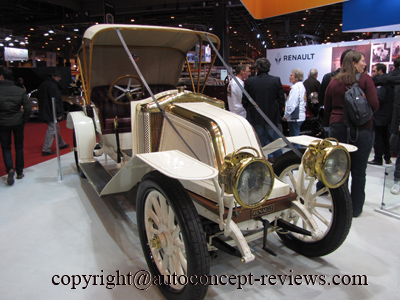 |
 |
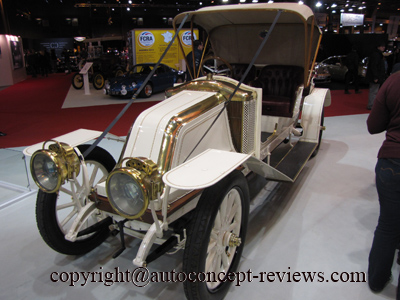 |
 |
|
| |
1913 Clement Bayard CB10
|
| Clement Bayard 4 cylinder 12 HP engine. 2300 cc. 3 speed gearbox with transmission by drive shafts. Claimed top speed 65 kph. |
 |
 |
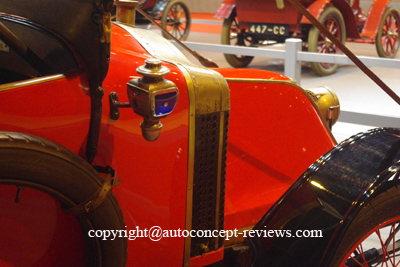 |
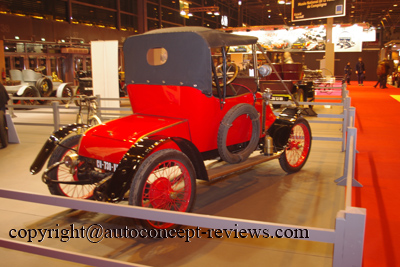 |
|
|
2 -70 Years of Ferrari |
in 1947, Enzo Ferrari started production of automobile under his own name. This first car was the Ferrari 125S. It was followed by the Ferrari 166 with the same V12 designed by Colombo extended from 1496 cc to 1995 cc. The Ferrari 166 gained important racing successes at Le Mans 24 Hours, Mille Miglia or Spa 24 Hours. Ferrari soon gained a high performance car reputation that allowed the production and sale of road going grand touring models. In 2017, seventy years later, Ferrari is selling 7000 cars per year and there is a waiting list for delivery. Previous models are gaining more and more success among car collectors and their value is sometime skyrocketing.
We have gathered here several Ferrari exhibited along the alleys of Retromobile 2017. |
| |
1949 Ferrari 166 MM Touring
|
| The Ferrari 166MM is the first Ferrari produced and sold by Enzo Ferrari. MM makes reference to its victory at Mille Miglia racing event. This model won the 24 hours of Le Mans in 1949 with Luigi Chinetti and Lord Selsdon at the wheel. See Car Review 1949 Ferrari 166 MM Spider for further informations and photos. |
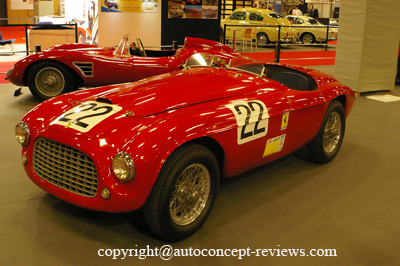 |
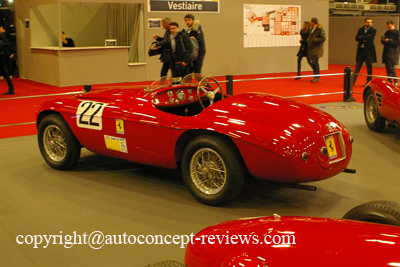 |
| |
1950 Ferrari 166-212 Export UOVO Marzotto by Fontana - exhibit RM Sotheby
|
The racing driver Gianni Marzotto ordered a Ferrari 166 in chassis form and sent it to Carrozzeria Fontana for the completion of an original and aerodynamic body. This body was designed by famous sculptor Franco Reganni. Its distinctive egg-shaped body style resulted in the nickname "Uovo". Gianni Marzotto participated with this car in the Mille Miglia and Giro di Sicilia racing events. The car was later upgraded with a larger 212 V12 engine.
This car was exhibited by RM Sotheby and shall be proposed at the Monterey Auction in August 2017. |
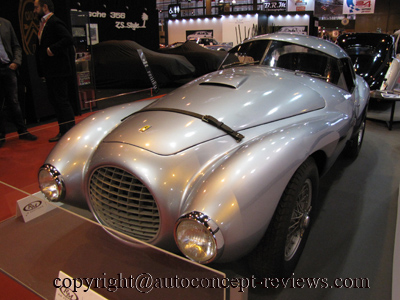 |
 |
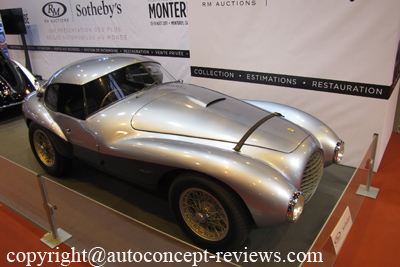 |
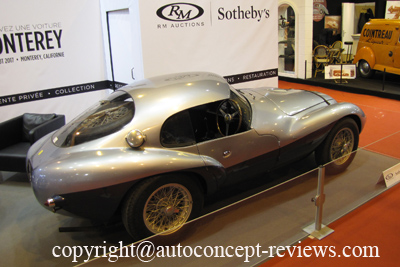 |
| |
1952 Ferrari 500 F2 |
At the end of 1951 the Formula 1 grid got orphan of Alfa Romeo,the first world champion of the competition with Giuseppe Farina and Juan Manuel Fangio. In order to promote the competition and guarantee the show, rules were fitted to allow Formula 2 racing cars to compete for the championship ( meaning cars could be motorised by atmospheric engine 2000 cm3 or by supercharged engine 500 cm3). The engine of the Ferrari F 500 is a 2 litres 4 cylinders developping 170 HP at the begining was developped by engineer Aurelio Lampredi. review continues here |
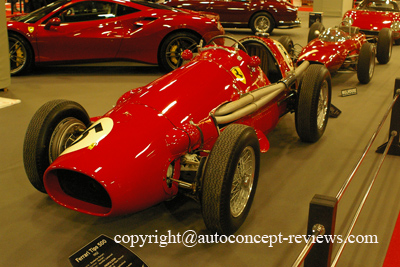 |
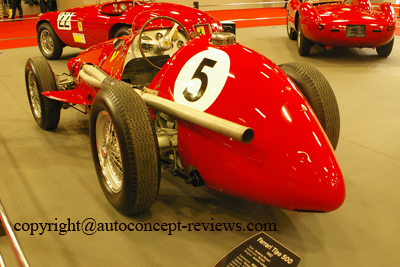 |
| |
1953 Ferrari 250 MM Vignale Spider
|
This Ferrari is one of only 31 250 Mille Miglia and one of just 12 Spyder versions, of which 4 where series 2 low line, this car is one of the 3 surviving low line cars styled by Vignale. This particular Ferrari 250 MM Vignale Spider was driven by Mike Hawthorn in the 1953 Mille Miglia. |
 |
 |
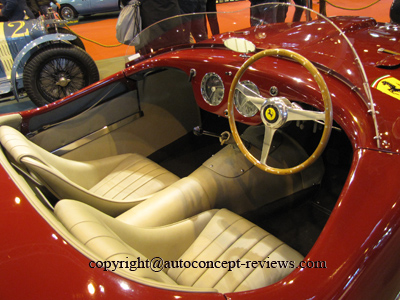 |
 |
| |
1957 Ferrari 250 GT Cabriolet Serie I Pininfarina
|
The first version of a Ferrari 250 GT Cabriolet appeared in 1957 Geneva Motor show with a body designed by Pinin Farina. A second serie was introduced in 1959. The 2953 cc V12 produced 220 hp at 7000 rpm. With a kerb weight of 1050 kg the top speed was claimed for 220 kph. |
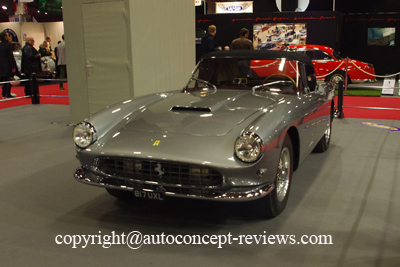 |
 |
 |
 |
| |
1957 Ferrari 500 TRC
|
The Ferrari 500 TRC was built after the 1956 500 Testa Rossa with some modifications that were necessary to comply with the new regulations. From 1957 cars entered in the Sport category were required a minimum cockpit width , rigid doors and some removable cover. The Ferrari 500 TRC was propelled by a 1984 cc 180 hp four cylinder engine for a kerb weight announced for 680 kg. Claimed top speed was 245 kph. Related story Car Review Ferrari 500 TRC Scaglietti 1957. |
 |
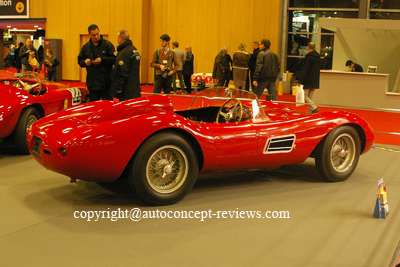 |
| |
1959 Ferrari 250 GT SWB
|
| The Ferrari 250 GT SWB , (for Short Wheelbase) was developed in 1959 with racing purpose in order to face even more stringent competition. It is derived from 250 GT Competition where wheel base was reduced from 260 cm to 240 cm. Body design is also by Pininfarina. review continues here |
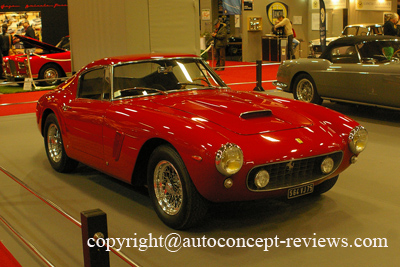 |
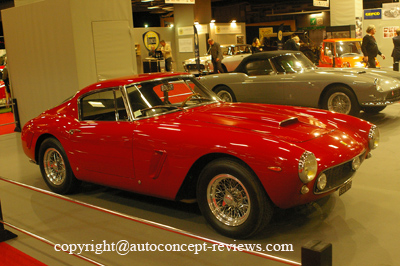 |
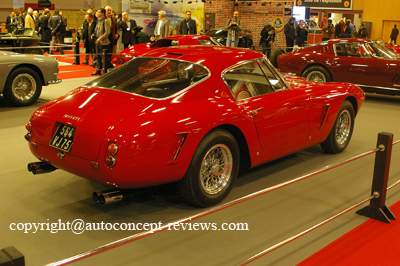 |
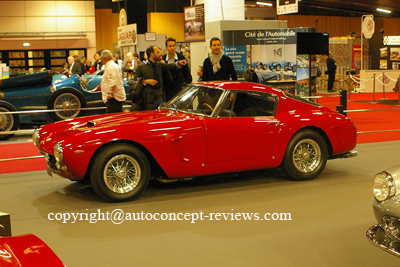 |
| |
1960 Ferrari 250 GT Competition by Drogo - Exhibit : Fast Cars Ltd
|
This 1960 Ferrari 250 GT was originally a 260 mm Long Wheelbase Coupé that was involved in an accident. The car was restored by Ferrari while modifying the wheelbase to 240 mm equivalent to the 250 GT SWB. The chassis was sent to Drogo to receive an original Competizione coachwork in 1961.
Related article Car Review Ferrari 250 Swb Competizione by Drogo 1961 |
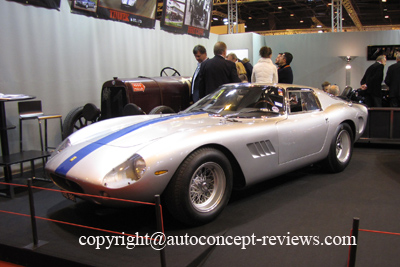 |
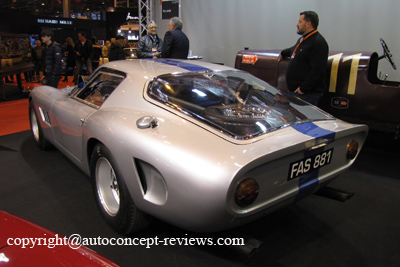 |
| |
1961 Ferrari 250 GT Breadvan
|
The Ferrari 250 GT N°2819GT began life in the form of a short chassis Ferrari 250 GT Berlinetta Competizione with aluminium body and was entered by its owner Olivier Gendebien at the 1961 Tour de France where it finished 2nd. The car was then sold to Count Volpi di Misurata who owned Scuderia Serenissima.
Count Volpi hired a team of engineers resigned from Ferrari to create Automobili Turismo e Sport (A.T.S.). As Enzo Ferrari refuses to sell his new Ferrari 250 GTO, Count Volpi charges Giotto Bizzarini and the car body specialist Piero Drogo to modify N°2819GT so it could beat the GTO.
The engine was moved back and down with dry sump system and received six twin choke 38DCN Webers carburettors. This lowered centre of gravity conjugated with an aerodynamic body design received the nickname of "breadvan" as a result of its body shape. It was smaller, lighter and more powerfull than the GTO. It was entered in 1962 Le Mans 24 Hours but suffered driveshaft failure. |
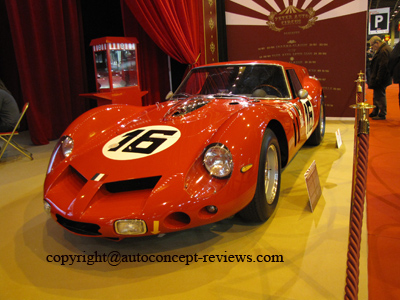 |
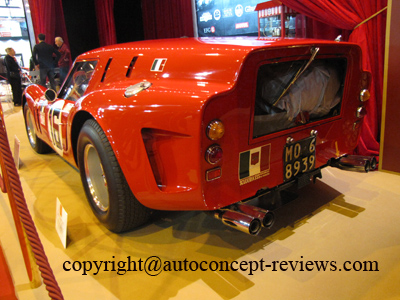 |
| |
1964 Ferrari 275 GTB
|
| The Ferrari 275 GTB was fitted with a body designed by Pininfarina and was introduced at the 1964 Paris Motor Show. Its long hood clearly illustrated the front V12 front position. The 3.285 cc V12 produced 280 hp at 7500 rpm allowed a top speed of 250 kph for a kerb weight of 1100 kg. It is the first production Ferrari with independant suspension on all wheels. It was followed by the GTB4 in 1967. |
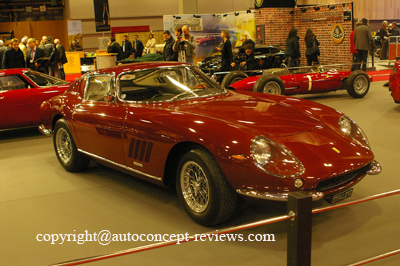 |
 |
| |
1965 -Ferrari 1512 -F 1-chassis N°0009 - Exhibit : Tradex
|
| Between 1961 and 1965 the Formula One Championship specified atmospheric engines with maximum 1500 cc. John Surtees won the 1964 Driver Championship. For the 1965 season, Mauro Foghieri had developped three engines, a V6 for the 156, a V8 for the 158 and a 180° 12 cylinder engine for the 1512. This Ferrari F1 1512 was driven by L. Bandini to 4th position in the 1965 US GP and 8th position in the Mexican GP. |
 |
 |
 |
| |
1965 Ferrari 250 LM
|
1964 was the time to develop a successor for the legendary Ferrari 250 GTO. Ferrari decided against resource-intensive advanced development and opted to fit a fixed roof to the existing open-top Type 250 P racing car for the Gran Turismo Class. The car was given the designation 250 LM and the body was developed by Pininfarina. The Ferrari 250 LM was used in the class of racing prototypes because the 100 units of this type necessary for homologation in the GT class could not be built by the end of 1965. On request, the Ferrari 250 lm could also be ordered in a roadworthy version and this made it the first series Ferrari to be powered by a centrally mounted engine. A total of 32 Ferrari 250 LM cars were manufactured. All were powered by the 3.3 litre V12 (3.285 cc.) developing approximately 320 hp, apart from the prototype with a three litre engine. review continues here |
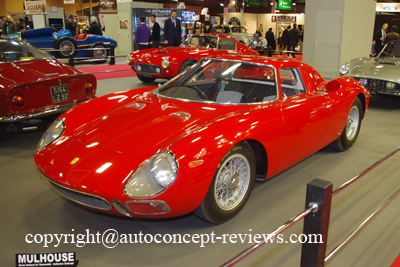 |
 |
| |
1967 Ferrari 166 F2 246 Tasman chassis N°0008 - exhibit Tradex
|
| This Ferrari 166 F2 chassis N°0008 was driven by Chris Amon and Brian Redman in several F2 GP during the 1968 season. It was then modified to Tasman Championship specification and raced by Chris Amon in New Zealand and Australia. |
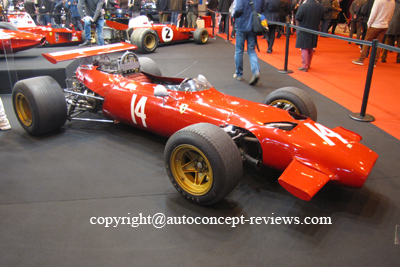 |
 |
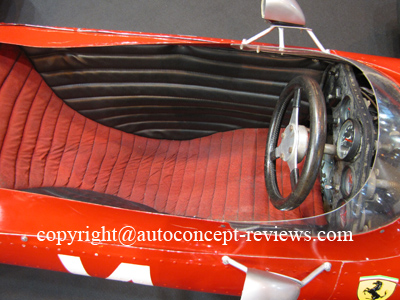 |
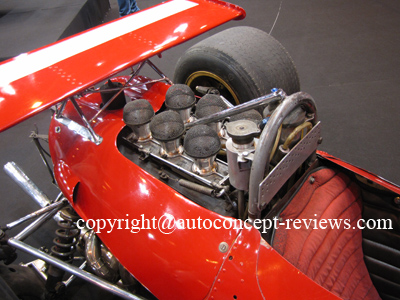 |
| |
1969 Ferrari 312 F1 chassis N°0019 - Exhibit Tradex
|
| This Ferrari F1 312 was driven by Chris Amonb and Pedro Rodriguez during the 1969 season. Chris Amon finished 3rd at Zandvoort Dutch GP while Pedro Rodriguez reached a 6th position at Monza. |
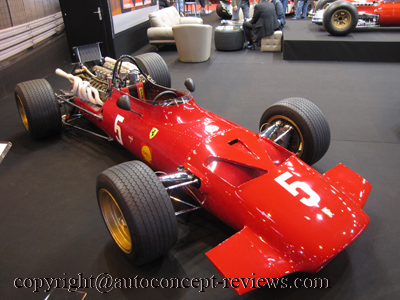 |
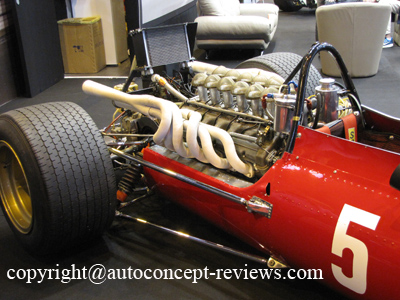 |
 |
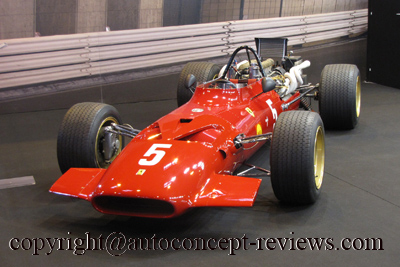 |
| |
1972 Ferrari 312 B3 Spazzaneve chassis N°009 - Exhibit Tradex
|
| The 1972 Ferrari 312 B3 Chassis N°009 was nicknamed "Spazzaneve"(Snow Plow) because of its original body style oriented for downforce. The Chassis N°009 is the first Ferrari 312 B3 produced and was necer raced in a F1 Championship event. It was intensely tested by Jacky Ickx, Clay Regazzoni and Arturio Mezzario. |
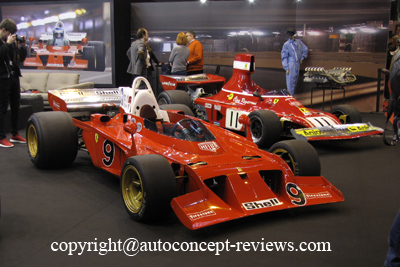 |
 |
 |
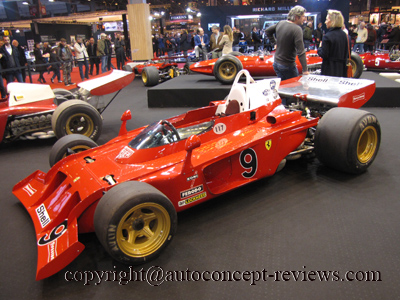 |
| |
1974 Ferrari 312 B3 - chassis N°014 - exhibit Tradex
|
| From 1966 to 1985 the Formula One Championship specified atmospheric engines with a maximum 3.000 cc capacity or 1.500 cc in supercharged or turbo charged form. The Ferrari 312 B3 Chassis N°014 was by Clay Regazzoni and Niki Lauda during the 1974 and 1975 season. In 1974, Clay Regazzoni finished second in the Formula One Driver Championship while Ferrari finished second in the F1 Constructor Championship. |
 |
 |
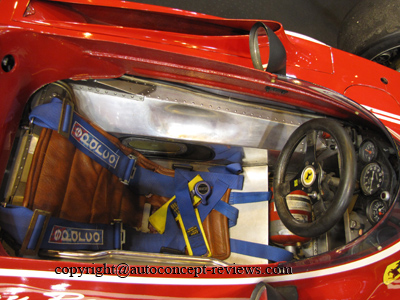 |
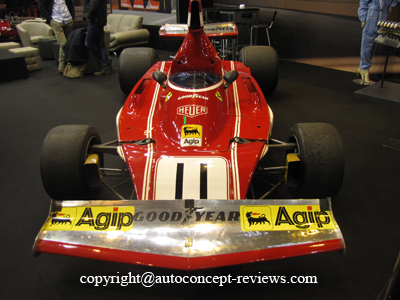 |
| |
1974 Ferrari 365 GT4BB - exhibit Movendi
|
|
| The Ferrari 365 GT4 BB (for Berlinetta Boxer) is the first production Ferrari Grand Tourer with its V12 engine in central position behind the driver. The car was introduced as a prototype at the Turin Motor Show. The body design was prepared by Pininfarina. The production model was started in 1973. The 4.390 cc 12 cylinder engine produced 380 hp at 7200 rpm for a car with kerb weight of 1445 kg. Claimed top speed is 300 kph. |
 |
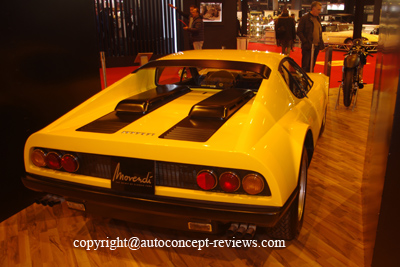 |
| |
1978 Ferrari 312 T3 - exhibit FISKENS
|
| The Ferrari 312 T3 was prepared for the 1978 F1 Championship season. It was now equipped with Michelin tyres. Reutemann won three races with this car and Villeneuve won at Montreal. |
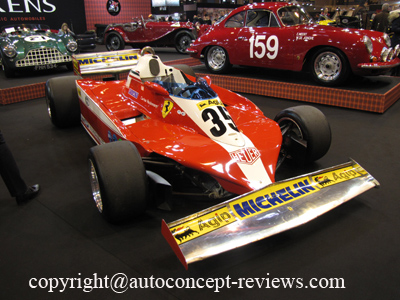 |
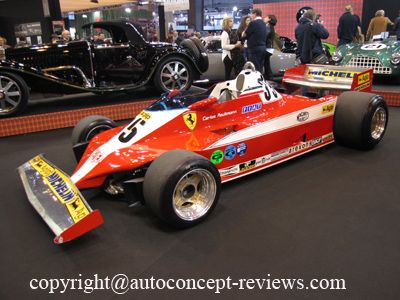 |
| |
1995 Ferrari F50 - exhibit Movendi
|
| Eight years after the introduction of the F40, Ferrari presented the F500 at the 1995 Geneva Motor Show. Ferrari gathered several technologies developped for the Formula One Championship into this new supercar. A 4.698 cc V12 dry sump engine with twin overhead camshafts and five valves per cylinder produced 520 hp at 8500 rpm allowing a claimed top speed of 325 kph for this car with a kerb weight of 1230 kg. |
 |
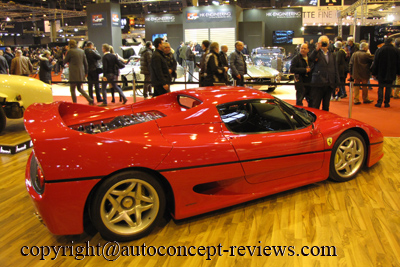 |
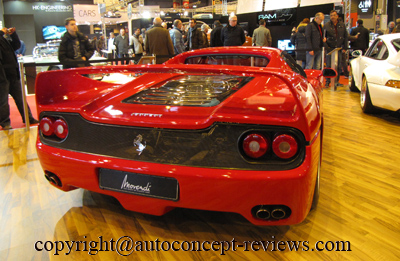 |
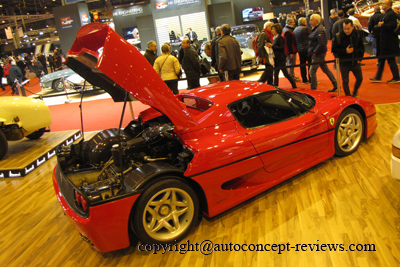 |
| |
2000 Ferrari 550 GT1 Prodrive - exhibit Girardo
|
| The Ferrari 550 GT1 was developped by Prodrive for private Farrari customers willing to enter the car in endurance competition. It was based on the Ferrari 550 Maranello introduced on the market in 1996 with a 5473 cc V12 producing 485 hp. A dozen of 550 GT1 were prepared by Prodrive. The car was run with success and Ferrari decided to have his racing department developping the factory 575 GT LM. |
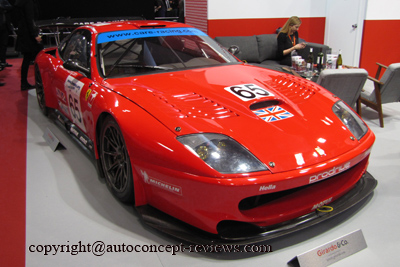 |
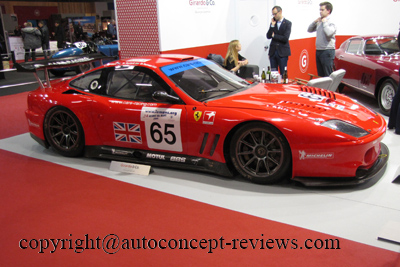 |
 |
 |
| |
2016 Ferrari 488 GTB
|
Maranello, 3 February 2015 – Forty years on from the unveiling of its first ever mid-rear-engined V8 model, the 308 GTB, the Prancing Horse opens a new chapter in its 8-cylinder history. The Ferrari 488 GTB provides track-level performance that can be enjoyed to the full even by non-professional drivers in everyday use. Its response times, nimbleness and on-the-limit driving guarantee a unique sense of exhilaration and unparalleled driving pleasure. review continues here |
 |
 |
| |
|
| |
|
|
The Group B was introduced in 1980 for the 1982 World Rally season. The Group B car had to be developped from a base model produced in at least 200 units per year. Some twenty Evolution car could be produced for rally season. A wide selection of technical solutions were made possible like central engine and four wheel drive system. Several manufacturers prepared Group B rally cars and it became an impressive challenge of performance. The success gathered a large number of spectators but it soon became difficult in some event to control this public supporting the event. After a few serious accident the Group B was cancelled starting from the 1987 season. |
| |
AUDI QUATTRO S1 |
| |
| |
AUSTIN METRO 6R4
|
|
| |
CITROEN BX 4TC
|
| |
| |
CITROEN VISA 1000 PISTES |
|
| |
FERRARI 308 GTB MICHELOTTO
|
|
| |
FORD RS200 |
| |
| |
| |
LANCIA 037
|
| |
|
LANCIA DELTA S4
|
|
| |
MAZDA RX7
|
| |
|
| |
OPEL MANTA 400
|
| |
| |
PEUGEOT 205 T16 EVO 2 SAFARI
|
| |
| |
PEUGEOT 205 T16 EVO2
|
| |
| |
RENAULT MAXI 5 TURBO
|
| |
| |
4 Unconventional F1 Racing Cars
|
| |
Lotus 63 AWD 1969
|
The Lotus 63 was designed to integrate four wheel drive system. The Cosworth DFV engine was mounted in reversed configuration so that the clutch was just behind the driver seat. There were one ZF final drive at both front and rear axle. The resulting driving position was well forward so that the feet of the driver were ahead of the front axle. Some racing drivers were therefore quite reluctant to drive the car.
John Miles drove the Lotus 63 in five Grand Prix during the 1969 season and only finished the race once. The car was extremely complex. Andretti, Bonnier and Rindt eventually raced the car with Rindt gaining the best finish with a second position at Oulton Park. |
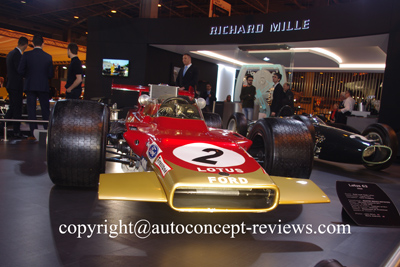 |
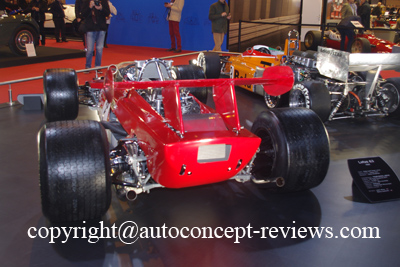 |
| |
1969 Cosworth F1 4WD - V8 Cosworth DFV
|
The four wheel drive Cosworth Formula One prototype was developped by Robin Herd using a Cosworth DFV engine. The car had, on each side, sponsons between the wheels connected with a stressed floor and bulkheads making up a monocoque unit. The bodywork was designed for an optimum aerodynamic with adequate downforce. The car was intensively tested but never raced. |
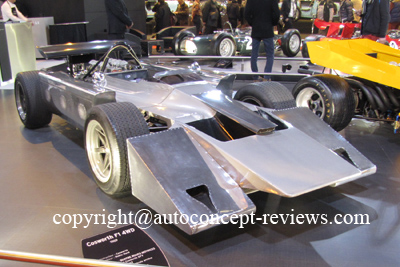 |
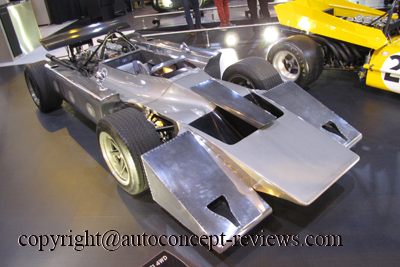 |
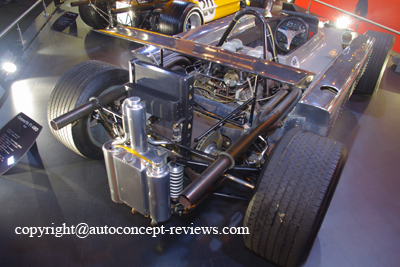 |
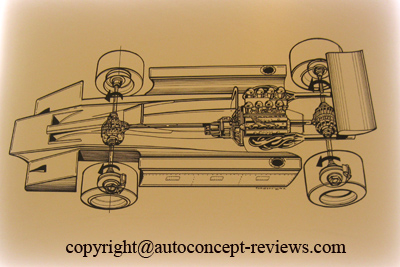 |
| |
1969 McLaren M9A AWD
|
The McLaren M9A was designed by Jo Marquart and was the first and only McLaren F1 with four wheel drive. The Cosworth DFV was mounted in reversed position in order to accomodate a Ferguson all wheel drive transmission. The car was only entered in one race but retired with mechanical failure. |
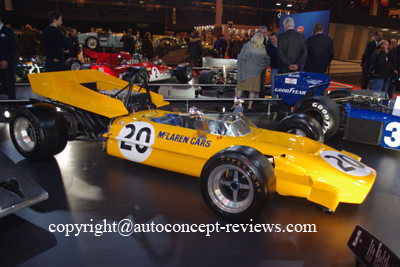 |
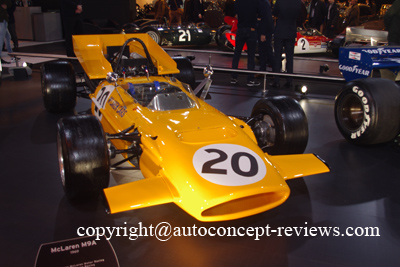 |
| |
1977 March 2-4-0 -V8 Ford Cosworth DFV
|
| Robin Herd at March tried to improve the performance of the March 761 by installing four driving wheels at the rear. The Hewland transmission was quite complex and expensive. Each rear wheel had an inboard disc brake. The car was intensely tested but never entered in a Formula One race. It ended up participating with some success in several hill clim events. |
 |
 |
 |
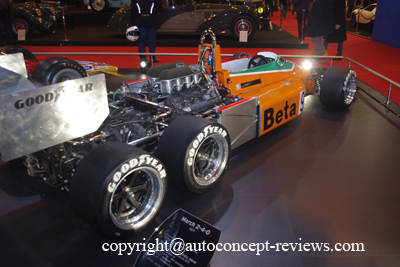 |
| |
1977 Tyrrell P34 V8 Ford Cosworth DFV
|
For the 1976 F1 Championship season, Derek Gardner developped the most unconventional design to appear in Formula One race. The Tyrrel P34 had four small wheels at the front and two conventional rear wheels at the rear. The main goal was to reduce the frontal area with smaller wheels and improve braking. The solution eventually worked since Jody Schekter and Patrick Depailler finished first and second at the 1976 Swedish Grand Prix. During the 1976 season, the Tyrrell P34 also picked eight second places to give Tyrrel the third place in the Manufacturers Championship. The development of the Tyrrell P34 was made difficult by the lack of adequate tyres for such small wheels. After a poor 1977 season, the technique was abandonned. |
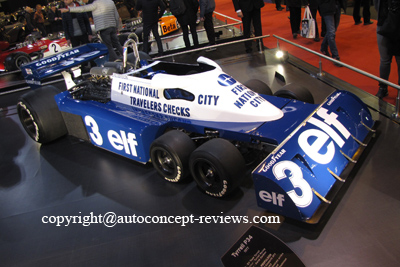 |
 |
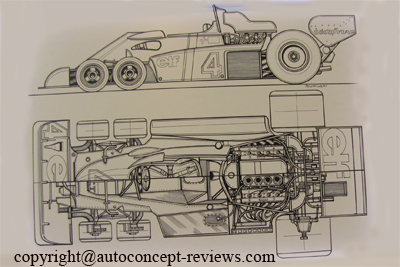 |
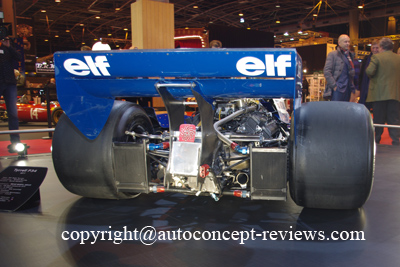 |
| |
5 - 70 years of Aston Martin DB ( David Brown )
|
In 1947, David Brown, a British industrialist took over the Aston Martin Company that was in financial difficulties. A few month later he acquired Lagonda Company. Aston Martin was founded in 1921 by Martin and Bamfort. In 1947, Aston Martin had a 2 Litre four cylinder engine propelled sports racing car produced from 1935. David Brown decided to continue production of the the 2 Litre sports car while developping a grand touring sports car with a six cylinder developped at Lagonda. The new model was soon unveiled as the Aston Martin DB2. The 2 Litre sports car was then called DB1.
That was the start of a long serie of DB models for several decades and in 2016 Aston Martin unveiled its latest model DB11. |
1949 Aston Martin 2 Litre DB1
|
| |
70 y 400x267/1949 Aston Martin 2 Litre DB1 - 1.jpg) |
70 y 400x267/1949 Aston Martin 2 Litre DB1 - 2.jpg) |
70 y 400x267/1949 Aston Martin 2 Litre DB1 - 3.jpg) |
70 y 400x267/1949 Aston Martin 2 Litre DB1 - 4.jpg) |
| |
1952 Aston Martin DB3 - Exhibit Fiskens
|
The Aston Martin DB3 is the first Aston to be built from the ground up as a pure racing car, it set off a chain reaction that would lead directly and without interval to Aston Martin winning not only Le Mans, but the world sports car championship eight years later.’ Aston Martin’s owner, David Brown, commissioned Robert Eberan von Eberhorst (who had worked with Professor Porsche on the design of the staggeringly successful D-type Auto Unions), to create an all-new purpose-built racer for the 1951 edition of the Le Mans race. The DB3, in structure, has a number of similarities to the Auto Union, with two longitudinal tubular chassis members, trailing arm suspension and a de Dion rear.
This sports racing open two-seater is one of just eight remaining examples built by Aston Martin. This DB3/6 was fitted with the 3 litre engine from new. |
70 y 400x267/1952 Aston Martin DB3 -6- J.D.jpg) |
70 y 400x267/1952 Aston Martin DB3 -2- J.D.jpg) |
70 y 400x267/1952 Aston Martin DB3 -5- J.D.jpg) |
70 y 400x267/1952 Aston Martin DB3 -3- J.D.jpg) |
| |
1953 - 56 Aston Martin DB3S
|
| related review : Aston Martin DB3S 1953-1956 |
70 y 400x267/1953 56 Aston Martin DB3S -6.jpg) |
70 y 400x267/1953 56 Aston Martin DB3S -1.jpg) |
70 y 400x267/1953 56 Aston Martin DB3S -3.jpg) |
70 y 400x267/1953 56 Aston Martin DB3S -2.jpg) |
| |
1953 Aston Martin DB2
|
| related review : Aston Martin DB2 Coupé 1950 |
70 y 400x267/1953 Aston Martin DB2-1.jpg) |
70 y 400x267/1953 Aston Martin DB2-2.jpg) |
| |
1954 Aston Martin DB2-4 Bertone Spyder -exhibit J.D. Classics
|
| This car is one of just 6 special Aston Martin Bertone bodied cars made for the American importer S.H. Arnolt and one of just three spyders. Furthermore this is the only deluxe example built to full road going specification. |
70 y 400x267/1954 Aston Martin DB2-4 Bertone Spyder -1a-J.D.jpg) |
70 y 400x267/1954 Aston Martin DB2-4 Bertone Spyder -1c-J.D.jpg) |
70 y 400x267/1954 Aston Martin DB2-4 Bertone Spyder -2a-J.D.jpg) |
70 y 400x267/1954 Aston Martin DB2-4 Bertone Spyder -3a-J.D.jpg) |
| |
1956 Aston Martin DB2-4 MkII
|
| |
70 y 400x267/1956 Aston Martin DB2-4 MkII - 1.jpg) |
70 y 400x267/1956 Aston Martin DB2-4 MkII -2.jpg) |
| |
1961 - 63 Aston Martin DB4 Convertible
|
| |
70 y 400x267/1961 63 Aston Martin DB4 Convertible -1.jpg)
|
70 y 400x267/1961 63 Aston Martin DB4 Convertible -2.jpg) |
| |
1961 Aston Martin Volvo DB208 Prototype
|
| In 1961 there was a project of development between Volvo and Aston Martin where Aston Martin provide 2499 cc four cylinder producing 150 hp at 6500 rpm for the Volvo P1800. Only one prototype was completed. |
70 y 400x267/1961 Aston Martin Volvo DB208 Prototype -1.jpg) |
70 y 400x267/1961 Aston Martin Volvo DB208 Prototype -2.jpg) |
| |
1964 Aston Martin DB 5 James Bond Goldfinger
|
| |
70 y 400x267/1964 Aston Martin DB 5 James Bond Goldfinger -1.jpg) |
70 y 400x267/1964 Aston Martin DB 5 James Bond Goldfinger -2.jpg) |
70 y 400x267/1964 Aston Martin DB 5 James Bond Goldfinger -3.jpg) |
70 y 400x267/1964 Aston Martin DB 5 James Bond Goldfinger -4.jpg) |
| |
1964 Aston Martin DB5 Cabriolet
|
| |
70 y 400x267/1964 Aston Martin DB5 Cabriolet - DB 70y- 1.jpg) |
70 y 400x267/1964 Aston Martin DB5 Cabriolet - DB 70y- 2.jpg) |
| |
1966 Aston Martin DB6 Saloon
|
| |
70 y 400x267/1966 Aston Martin DB6 Saloon -1- DB 70y - 1.jpg) |
70 y 400x267/1966 Aston Martin DB6 Saloon -2- DB 70y - 2.jpg) |
| |
Overview of some cars around the alleys
|
| |
Alpine
|
| |
1959 Alpine A106
|
| related article: Car Review Alpine A106 1955 1959 |
 |
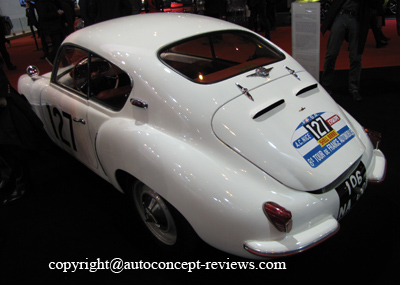 |
| |
1960 Alpine A108
|
| Jean Redele wanted to complete his production with a cabriolet and contracted Giovanni Michelotti for the design of the car. It is based on the mechanical components of the Renault Dauphine. The 845 cc in line four cylinder engine produce 31 hp and allow the 580 kg automobile to reach a claimed speed of 160 kph. |
 |
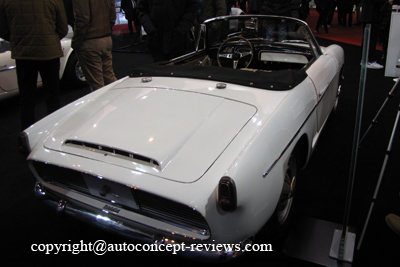 |
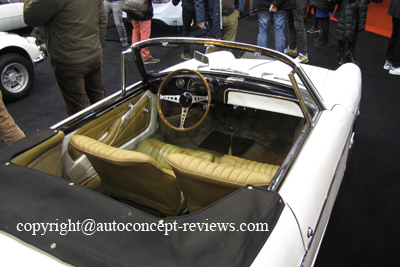 |
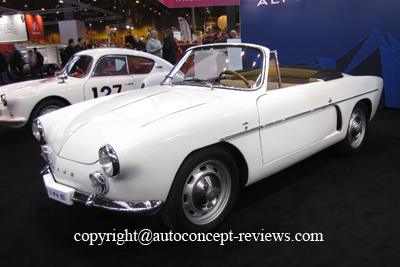 |
| |
1962 - 1977 Alpine A110 |
| related article: see Car Review Renault Alpine A110 1962 |
 |
 |
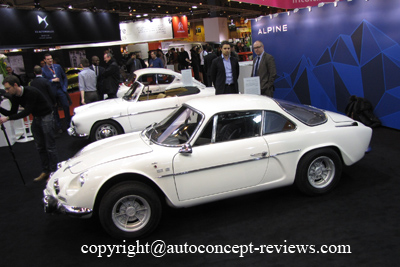 |
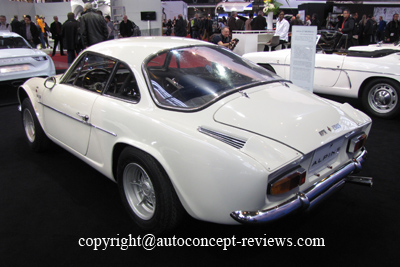 |
| |
1971 1985 Alpine A310
|
| The Alpine A310 is introduced in 1971 and shall be manufactured until 1985. It is intended to extend the potential market of the Company with a more sophisticated sports car including a small rear seat. The first models are powered by a four cylinder while the car will be proposed with a V6 engine later. Around 11.500 units have been sold with a majority of V6 models. |
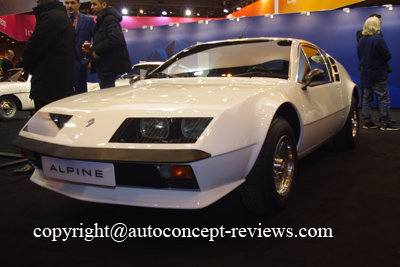 |
 |
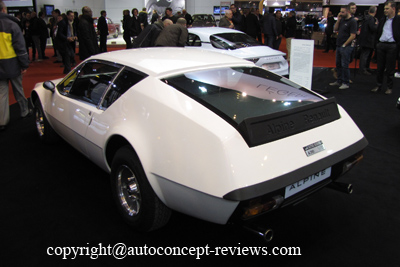 |
 |
| |
1992 Alpine A610 Albertville Winter Olympic Game limited serie
|
| This Alpine A 610 is part of a limited serie prepared for the Winter Olympic Games in Albertville. The 2.975 cc turbocharged V6 produces 250 hp. The car is announced with a top speed of 265 kph with a weight of 142 kg. |
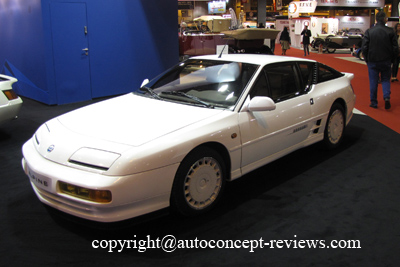 |
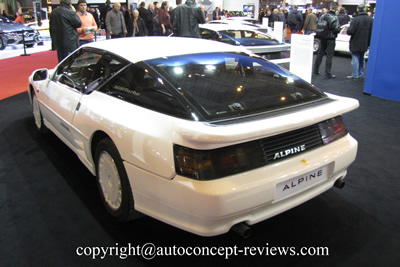 |
| |
2017 Alpine Vision Concept
|
| related article: Car Review Alpine Vision Concept 2017 |
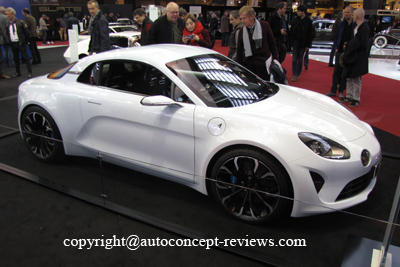 |
 |
| |
| |
Bentley
|
| |
1928 Bentley 3 Litre Red Label Speed Model
|
| related article: Car Review Bentley 3 Litres Le Mans Winner 1921 1927 |
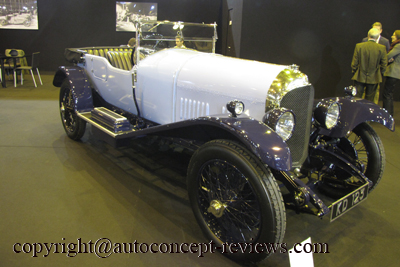 |
|
 |
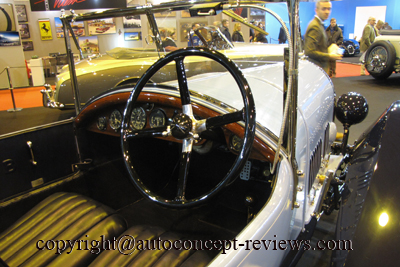 |
| |
1930 Bentley Speed Six - Exhibit Lukas Huni
|
Bentley ranks among the most famous of all names in automobile industry. Founded by W.O. Bentley, his cars were successful in winning the Le Mans 24 Hours race no fewer than five times, the most significant wins being 1929 and 1930 when the Speed Six , an upgraded version of the 6.5 Litre- driven by, amongst others, the famous Woolf Barnato-beat the Mercedes SSK works racer.
There was an increasing demand from owners of the 3 Litre Bentley for a more civilised and more luxurious Bentley which inevitably meant considerably more weight. As a consequence , and long before the 4.5 Litre was introduced, W.O.Bentley realised the need to develop a stronger chassis combined with a much more powerful engine capable of high speed driving with all types of coachwork. This lead to the creation of the 6.5 Litre Bentley in 1926, featuring aluminium pistons, improved overhead valve gear and carburettors, twin plug ignition and a very sophisticated three flow to the overhead camshaft. The performance was excellent, and in cooperation with the leading coachbuilders many superb 6.5 Litre were created. 368 6.5 Litre cars were made in total.
It was obvious that the powerful 6.5 Litre six cylinder Bentley formed the ideal base for a competition development in 1929. The Speed Six was conceived with an eye to long distance reliability and featured many improvements. For racing, three Works Cars were built mainly to compete in the Brooklands Double Twelve and in the Le Mans 24 Hours race. They were referred to as Old Number 1, Old Number 2 and Old Number 3. |
 |
 |
 |
 |
1930 Bentley Speed Six - exhibit Fiskens
|
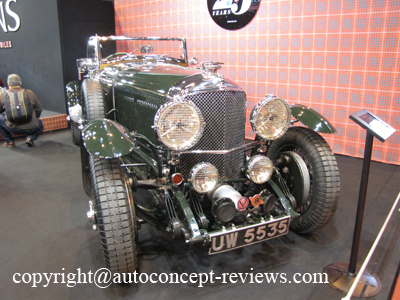 |
 |
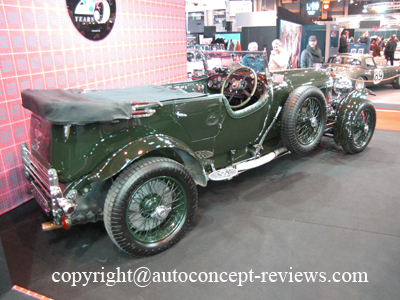 |
 |
| |
1932 Bentley 8 Litre Tourer
|
One of just 100 Bentley 8 Litres in total. The Bentley 8 Litres was designed as a fast powerful chassis capable of carrying heavy closed coachwork with sports car levels of performance. Indeed when the 8 Litre was introduced at the 1930 Olympia Motor Show it was the fastest production chassis capable of 103 mph at 3.500 rpm with high ratio 15/53 axle.
related article: Car Review Bentley 8 Litres Sportsman Coupe 1931 by Gurney Nutting |
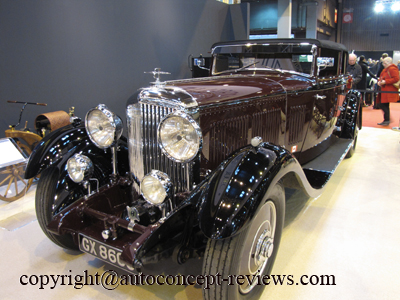 |
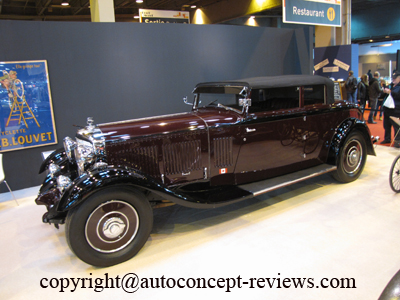 |
 |
 |
| |
BMW
|
| |
1971 BMW 3.0 CSL Groupe 2 - A.D.P. Automobiles
|
| |
 |
 |
| |
1974 BMW Alpina 3.0 CSL Group 2- william i anson
|
| |
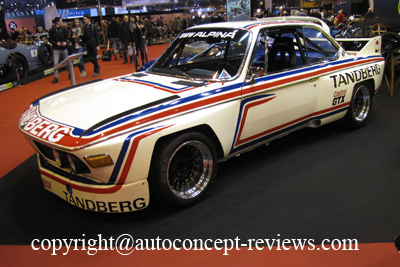 |
|
| |
1986 BMW 635 CSI Schnitzer Group A - Ascott
|
| This BMW 635 CSI Schnitzer Group A chassis N°RA2-79 finished 3rd in 24 Hours Spa of 1986 Group A Championship. The specially prepared BMW 3.5 Litre produces 300 hp at 7000 rpm. Gearbox is a 5 speed Getrag. |
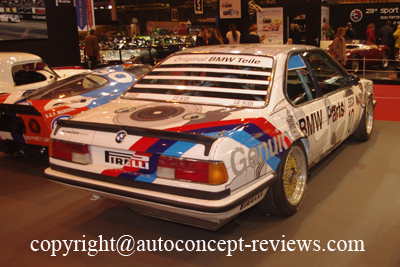 |
 |
| |
Bugatti
|
| |
1920 Bugatti Type 22 Brescia 16 Valve Long Tail -Lukas Huni |
| |
 |
 |
| |
1924 Bugatti Type 23 Brescia -Movendi
|
| |
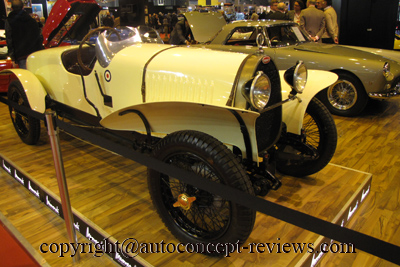 |
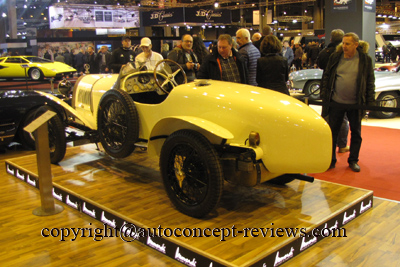 |
| |
1933 Bugatti Type 54 Grand Prix - Lukas Huni
|
| The Type 54 Grand Prix is one of the most spectacular Grand Prix Bugatti for two reasons. On one hand it features the timeless design of Ettore's Type 35 Grand Prix but is much larger and more impressive. On the other hand its 4.9 Litre Straight Eight Twin Cam makes it the most powerful Grand Prix that Bugatti produced with around 300 horsepower available. |
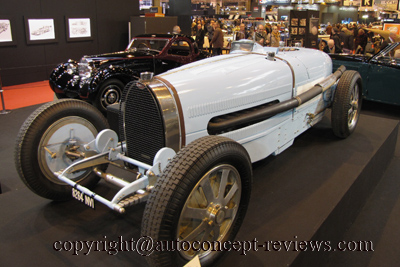 |
 |
| |
1933 Bugatti Type 55 Jean Bugatti Roadster - Lukas Huni
|
The Bugatti Type 55 Roadster was introduced in 1932 as a replacement to the Bugatti Type 43. It is often considered as the most impressive roadster made by Bugatti. It is derived from the Bugatti Type 51 Grand Prix the engine of which was detuned for road use. The 2300 cc eight cylinder engine with supercharger deloped 135 hp at 5.000 rpm. The claimed top speed is in the order of 175 to 180 kph. |
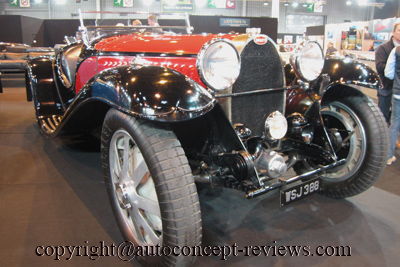 |
 |
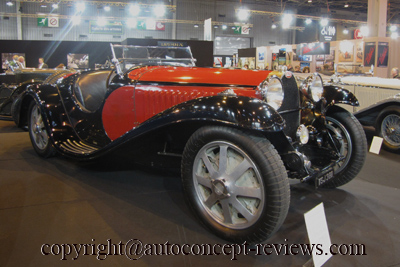 |
 |
| |
1934 Bugatti Type 59 Grand Prix - Lukas Huni
|
| Caused by changed regulations to a new Formula Libre, Jean Bugatti developed the Type 59 Grand Prix based on the Type 57, featuring a 3.3 litre eight cylinder engine with Roots-type supercharger, dry sump, Scintilla Vertex magneto and a much refined suspension with De Ram shock absorbers. The car shown here was almost exclusively raced by work driver René Dreyfus who was reasonably successful including an outright victory at the 1934 Belgian Grand Prix at Spa. At the end of that racing season all four works cars have been sold to privateers- Exhibit by Lukas Hüni |
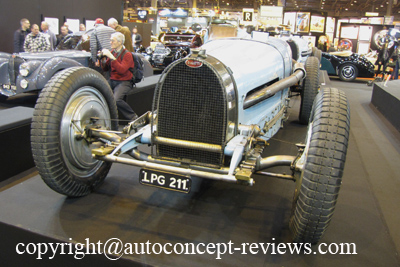 |
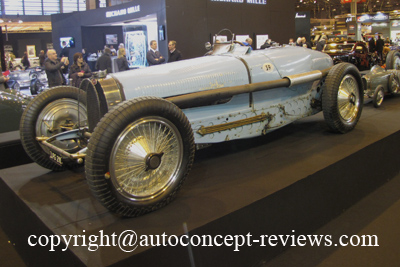 |
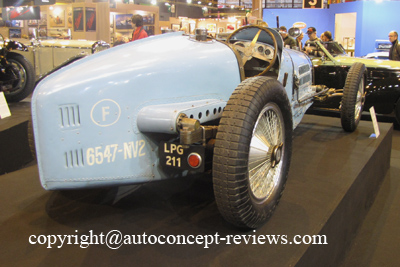 |
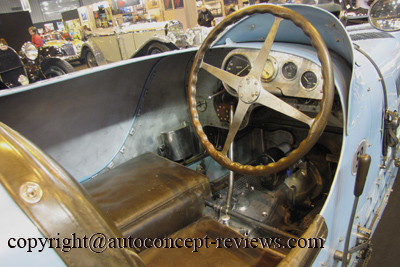 |
| |
1936 Bugatti Atlantic - - Lukas Huni
|
| related article: see Car Review Bugatti Type 57 S Atlantic – Chassis 57473 - 1937 |
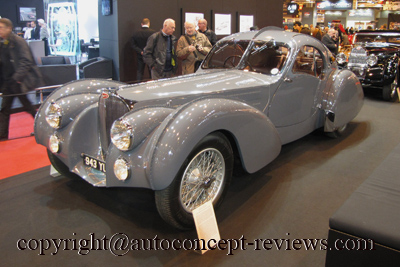 |
 |
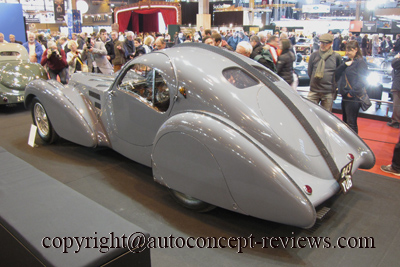 |
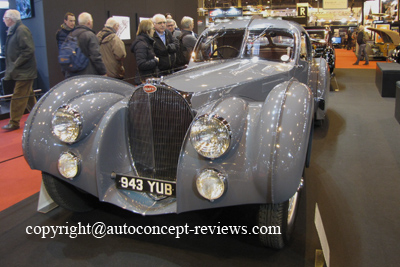 |
| |
1937 Bugatti Type 57 S Atalante - Lukas Huni
|
| related articles: see Car Review Bugatti 57 S Atalante 1938, Bugatti Type 57 SC Atalante Coupé Gangloff 1937 |
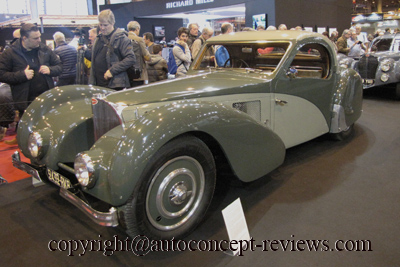 |
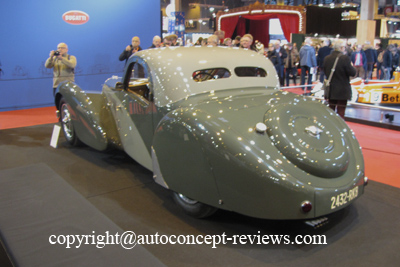 |
| |
1939 Bugatti Type 57 Figoni Vanvooren - Auto Classique Tourraine
|
| |
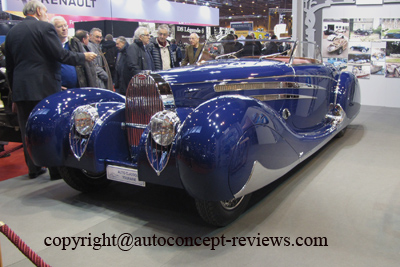 |
 |
| |
1996 Bugatti EB110 GT - Movendi
|
| related article Car Review Bugatti EB 110 SS 1992 1995 |
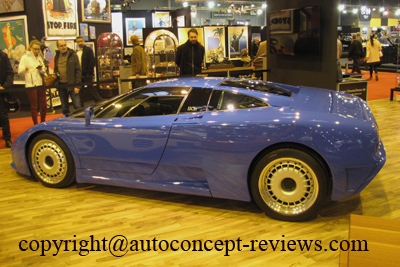 |
|
|
D.B. (Deutch Bonnet) |
| |
1954 1959 D.B. Coach HBR5 |
The D.B. Coach HBR5 was produced between 1954 and 1959. Around 600 cars have been produced. The first units had an aluminium body while the others had a glass fibre composite body. The aluminium body was made by Cottard coachbuilder. The chassis was steel backbone type. The 848 cc Panhard twin cylinder engine was producing 50 hp at 6000 rpm allowing a claimed top speed of 160 kph for a weight of 527 kg.
|
|
Delage
|
| |
1927 Delage 1500 GP - 90 years
|
| related article: see Car Review Delage 15-S-8 1500 GP 1927 |
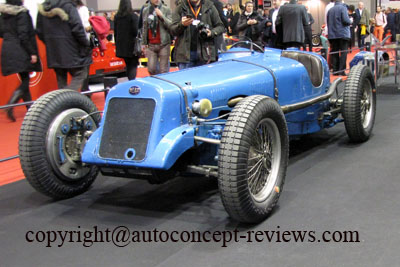 |
 |
 |
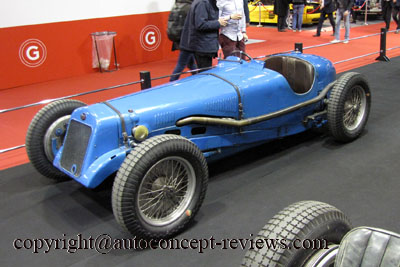 |
| |
| |
F.C.A. - Fiat, Lancia, Chrysler, Dodge, Alfa Romeo Group - F.C.A. Heritage
|
| |
| |
1921 A.L.F.A. G1 - Fast Cars Ltd
|
| The A.L.F.A. (Anonima Lombarda Fabbrica Automobili) G1 was produced between 1921 and 1922. The 6.330 cc in line six cylinder engine produce 70 hp at 2100 rpm. Only 52 A.L.F.A. G1 were produced in different versions. It is just in 1921 that the Alfa Romeo 20-30 ES Sport is launched and was the first automobile to bear the Alfa Romeo brand name. The Banca Italiana di Sconto had acquired the A.L.F.A. Company in 1914 and had designated Nicola Romeo to manage it. |
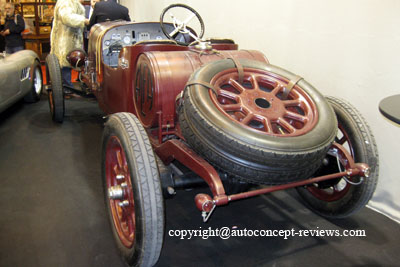 |
 |
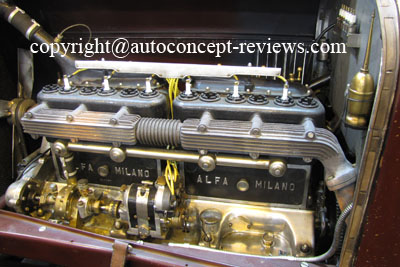 |
| |
1931 Alfa Romeo 8C 2300 Spider Zagato- Fiskens
|
| The Alfa Romeo 8C 2300 Spider was produced between 1931 and 1932. The 2336 cc in line eight cylinder engine with supercharger produces 155 hp at 5200 rpm allowing a claimed top speed of 185 kph. |
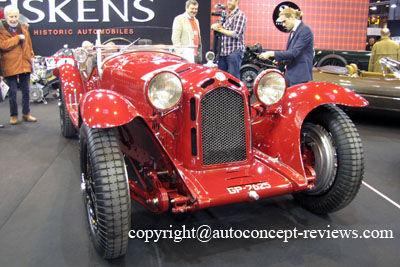 |
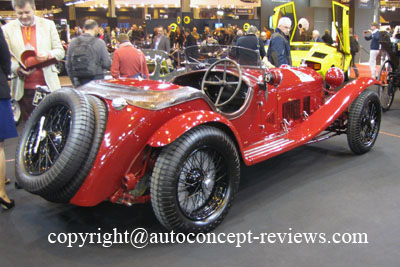 |
| |
1932 Alfa Romeo 8C 2600 Monza - J.D. Classics
|
| Two seats GP car produced between 1931 and 1933. The car is propelled by 2.336 cc in line eight cylinder with one supercharger producing 180 hp at 5400 rpm. Claimed top speed is 225 kph. Unladden weight is announced for 920 kg. |
 |
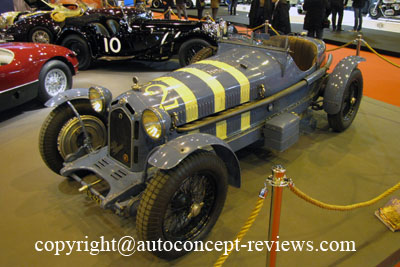 |
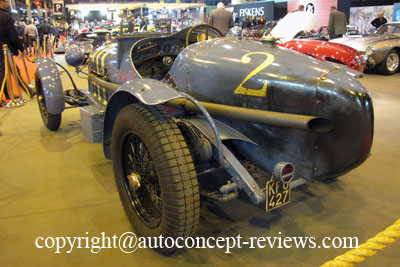 |
 |
| |
1938 Alfa Romeo Tipo 308 -Pure Sang Estabelecimento
|
| 870 kg single seat GP car propelled by 2991 cc eight cylinder engine with two supercharger producing 295 hp at 6000 rpm for a claimed top speed of 260 kph. |
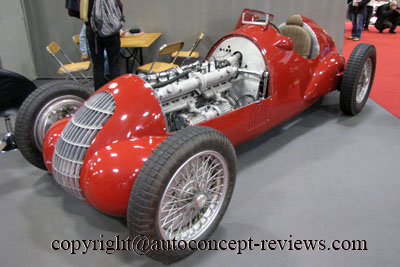 |
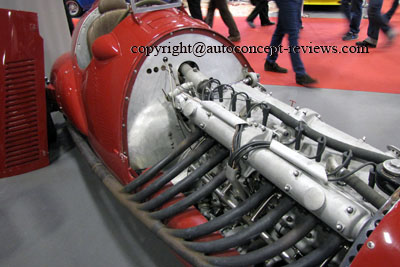 |
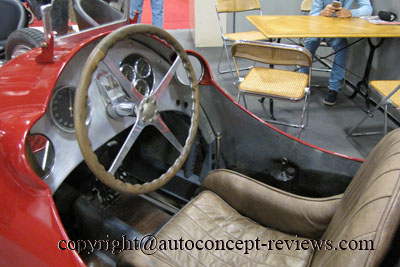 |
 |
| |
1960 Fiat Abarth 1000 Bialbero Record - FCA Heritage
|
| The Fiat Abarth 1000 Bialbero Record is the fruit of the partnership between Fiat, Abarth, Pininfarina and Turin Polytechnic University and presents a brand new tubular bearing structure and bodywork that is the result of detailed studies in the wind tunnel. To show off the reliability and enormous power of the new 1000 cc twin cam, Carlo Abarth decided to line the monoposto up on the track at Monza from September 28th to October 1st 1960, to set new records in international Class G (from 751 to 1100 cc). Nine drivers took turns behind the steering wheel, and in the last few days of September they set the new international records for the 12 hours, the 2000 miles, the 24 hours, the 5000 km, the 50000 miles, the 48 hours and the 10.000 km. The feat continued until October 1st when they broke the world record for the 72 hours. The 982 cc four cylinder produce 108 hp at 8000 rpm providing a claimed top speed of 220 kph. |
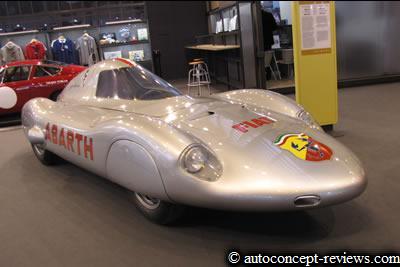 |
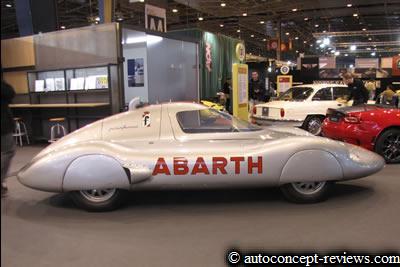 |
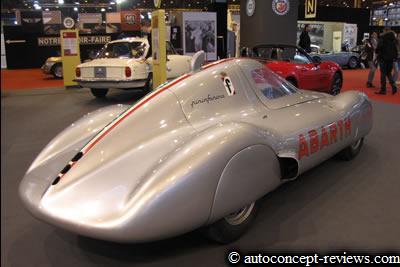 |
 |
| |
1960 Alfa Romeo 6C 3000 CM Coupé Superflow IV Pinin Farina - exhibit Fast Cars Ltd. |
| related article see: Car Review Alfa Romeo 6C 3000CM Superflow IV Pinin Farina 1960 |
| |
1960 Lancia Flaminia Loraymo - FCA Heritage
|
This one of a kind car, based on a chassis Lancia Flaminia Coupé was conceived by industrial designer Raymond Loewy who is known for the design, besides other projects, of the famous Coca Cola bottle as well as the Lucky Strike logo. Raymond Loewy has projected this body for his own use and contracted Turin coachbuilder Rocco Motto.
The vehicle, presented at the 47th edition of the Paris Motor Show in October 1960, was named Loraymo, a word formed by combining part of the designer's name and surname. Its most obvious style features includes a large grille encolsed in a chrome plated steel bezel doubling as a bumper, retracted front wings, fog lights orotruding from the body, a slight convexity in the central part of the body for a "Coca Cola bottle" effect that improved the aerodynamic performance of the car, no boot lid (the boot could only be accessed from the passenger compartment) and rear spoiler on the roof to reduce aerodynamic turbulence. |
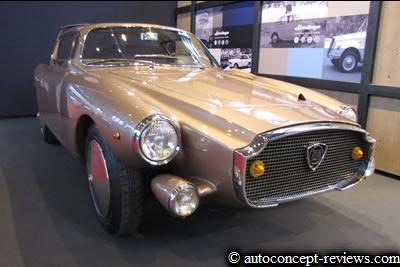 |
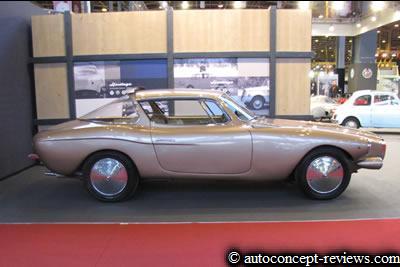 |
 |
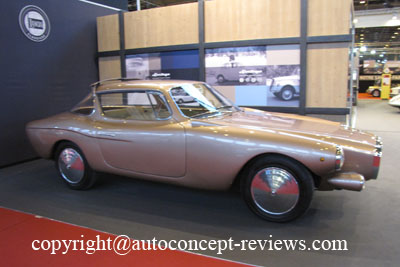 |
| |
1963 Alfa Romeo 2600SZ Protototipo - FCA Heritage
|
| After the presentation of the Alfa Romeo 2600 Sedan, Sprint and Spider, the first prototype designed by Zagato appeared on the stand of the coachbuilder at the 1963 Turin Motor Show. This car is propelled by a 2.584 cc in line six cylinder producing 145 hp at 5.900 rpm. The claimed top speed is announced for 200 kph. |
 |
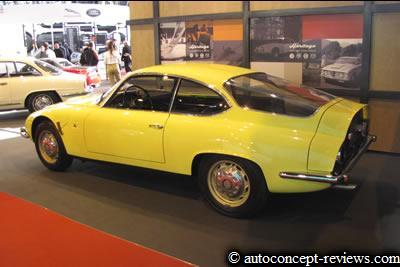 |
| |
1963 Fiat Abarth 1000 Bialbero - FCA Heritage
|
| Even if the design and performances of the Fiat Abarth 1000 Bialbero are those of a real racing car, most mechanical elements comes from the popular Fiat 600. In autumn 1960 the version with displacement increased to 982 cc made its debut installed for the first time in the record breaking single seater shown above. The same year, Abarth presented the new 1000 Bialbero racing sedan with Zagato bodywork at the Turin Motor Show. In 1961, the partnership between Abarth and Zagato came to an end and Carlo Abarth pursued on his own the development. The Car shown here is propelled by a 982 cc in line four cylinder producing 104 hp at 8.000 rpm. Top speed is announced for 220 kph. |
 |
 |
 |
 |
| |
1964 Lancia Flaminia Coupé Pininfarina - FCA Heritage
|
| At the 1958 Geneva Motor Show Pinin Farina exhibited an elegant prototype of a coupé built on a shortened wheelbase Flaminia sedan. The production version was presented at 1959 Turin Motor Show and the Lancia Flaminia Coupé was proposed from that date until 1967. The Lancia Flaminia Coupé was offered with two different types of engine, one 2500 cc and the other 2800 cc. The body was designed and built by Pinin Farina. |
 |
 |
| |
1968 Fiat 500 Gamine by Vignale- FCA Heritage
|
| In the mid 1960s, designers created a neo-vintage look to attract the young and non-conformist clientele who greatly appreciated the unexpected combination of nostalgia and modernity. Within this trend, Alfredo Vignale unveiled a small roadster at the 1967 Paris Motor Show called the Gamine. Based on the Fiat 500 F , this leasure vehicle maintained all the technical features of the original model but had a platform reinforced with steel tubes and side rails welded to tubular structure of the passenger compartment. The Gamine was produced in 400 units between 1967 and 1971. |
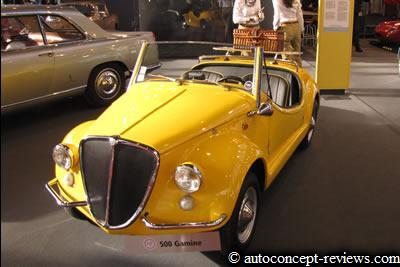 |
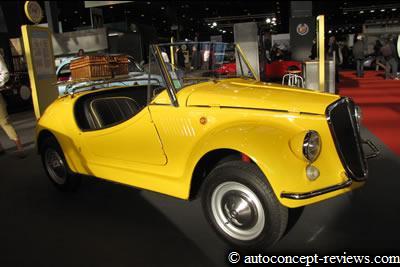 |
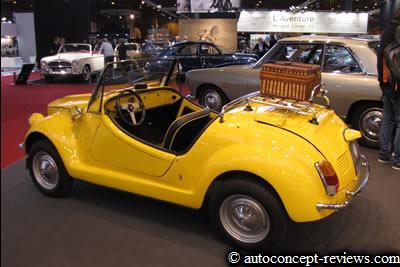 |
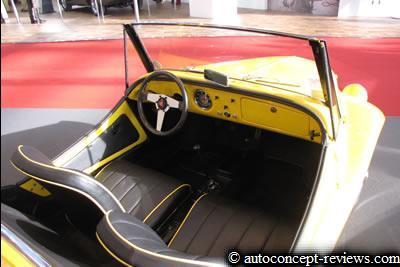 |
| |
2000 Dodge Viper GTS R -5th 2000 Daytona 24 Hours
|
| |
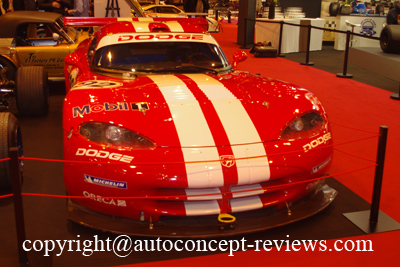 |
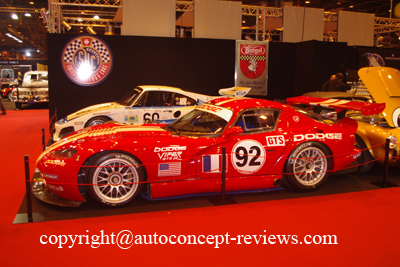 |
| |
Ford
|
| |
1972 Ford Capri RS2600 Group 2 -william i anson
|
| 330 hp 2.903 cc V6 engine with Weslake aluminium heads and magnesium slide throttle injection. |
 |
 |
| |
Jaguar
|
| |
1961 1975 Jaguar E Type - Retro Roadster and Jaguar Classic
|
| related review : 1961 1975 Jaguar E Type Roadster |
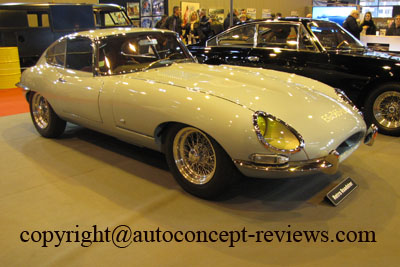 |
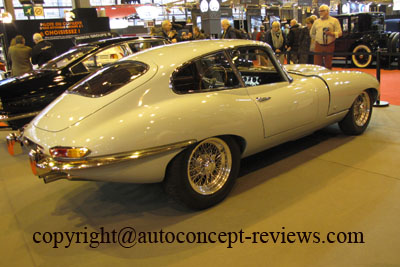 |
 |
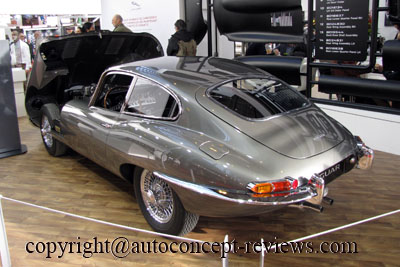 |
| |
1962 Jaguar E Type Semi Lightweight- J.D. Classics
|
| related article see Car Review Jaguar E-Type Hard Top Lightweight ’86 PJ’ 1963 |
 |
 |
 |
 |
| |
1991 Jaguar XJR15 Track only competition car -J.D. Classics |
| This Jaguar XJR 15 is one of the 16 examples that competed in the Intercontinental Challenge race series. |
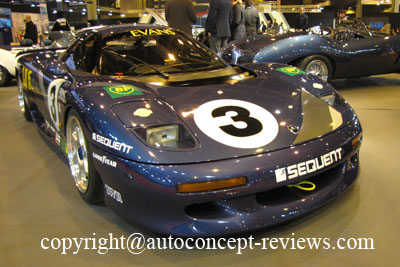 |
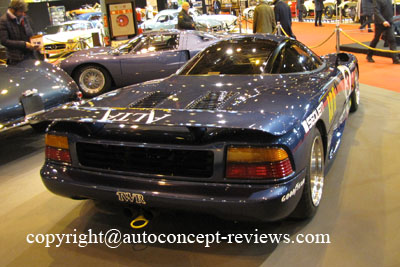 |
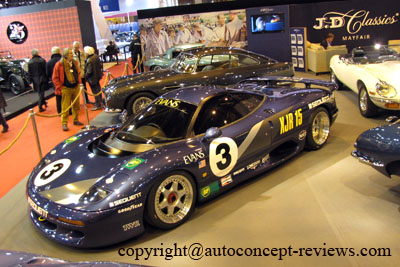 |
 |
| |
2016 Jaguar XKSS Continuation - Jaguar Classic
|
| related review : 2016 Jaguar XKSS Continuation |
 |
 |
| |
| |
Lamborghini
|
| |
| |
1964 Lamborghini 350 GT - Automobili Lamborghini Polostorico
|
| This Lamborghini 350 GT Coupé Touring Chassis N°0121 has been fully restored between February 2015 and September 2016 by Automobili Lamborghini Polostorico. |
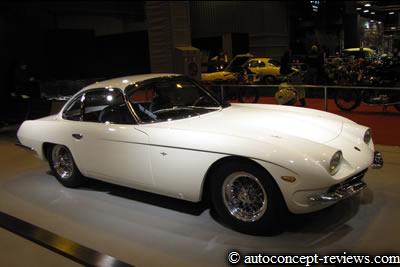 |
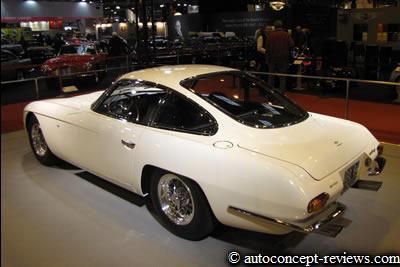 |
 |
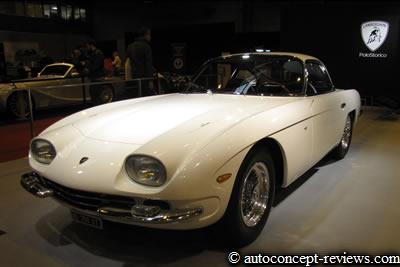 |
| |
1975 Lamborghini LP400 Periscopio - Exhibit FISKENS
|
| related article: Car Review Lamborghini Countach by Bertone 1971 1978 |
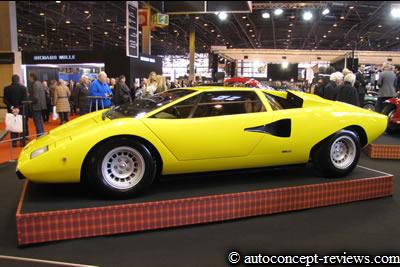 |
 |
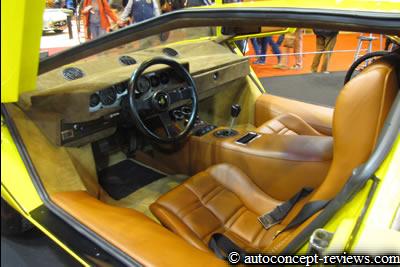 |
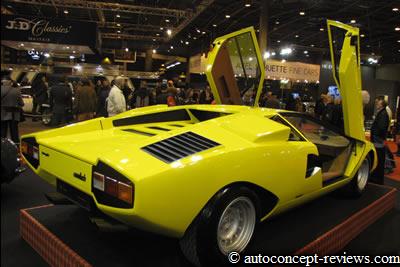 |
| |
1995 Lamborghini Diablo VT - JeanLainVintage Premium Classic Cars
|
| The Lamborghini Diablo replaced the Countach and was produced from 1990 to 2001. With power output of supercars rising gradually, it was conceivable that at some point the traction control systems would not cope anymore with their task. The solution was a move to all wheel drive and that is the Diablo VT which appeared at 1993 Geneva Motor Show. The VT designation is short for Viscous Traction. With a differential in the nose, power was fed to the front wheels by a viscous coupling via a propshaft from the front of the gearbox. In normal driving conditions only the rear wheels are driven but if these started to lose traction, up to 25% of the available power would be fed to the front. |
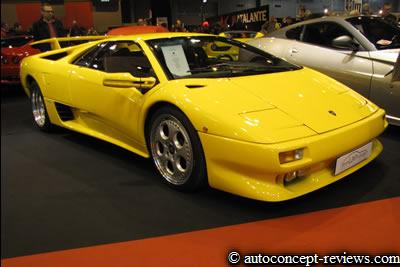 |
 |
| |
McLaren
|
| |
| |
1966 McLaren M1B - Ascott |
| This McLaren M1B is powered by a 350 c.i. Chevrolet OHV V8 prepared by Mathwall Engineering and producing 505 hp at 6.500 rpm. The gearbox is a four speed Hewland. |
 |
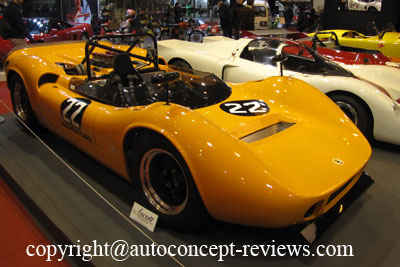 |
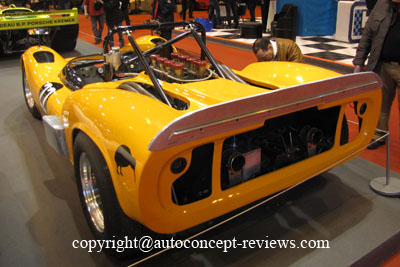 |
 |
| |
Maserati
|
| |
1958 64 Maserati 3500 GT - exhibit Maserati France
|
| related article: see Car Review Maserati 3500 GT Coupé Touring & Spider Vignale 1958-1964 |
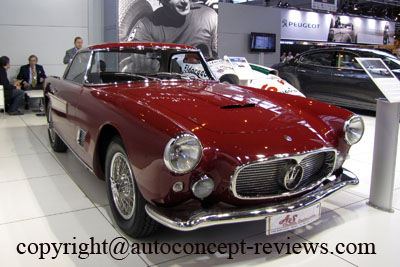 |
| |
1958 Maserati Eldorado Indianapolis - Maserati France
|
| This Maserati was specially prepared for the 1958 Two World Trophy raced at Monza over 500 miles. American Indianapolis special race cars were opposed to European racing cars. The Maserati Eldorado is equipped with a 4.2 Litre V8 engine derived from the 450S. The body was made by Fantuzzi. The Maserati Eldorado was driven by Stirling Moss who finished 7th overall. The project was financed by "Eldorado"Ice Cream producer Gino Zanetti which explains the decoration. |
 |
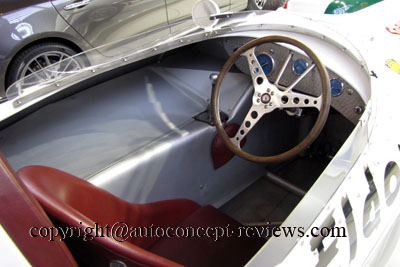 |
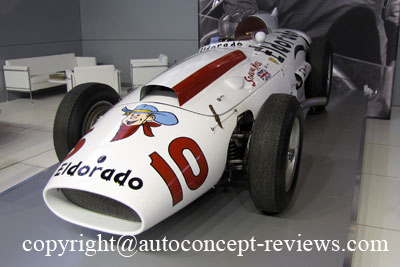 |
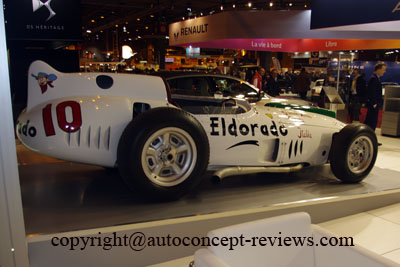 |
| |
1975 Maserati Khamsin - Cochera
|
| Only 430 Maserati Khamsin have been produced between 1974 and 1982. The Khamsin is propelled by a 4930 cc V8 producing 320 hp. With a weight of 1980 kg, the Khamsin has a claimed top speed of 275 kph. The body styling was conceived by Gandini for the Carrozzeria Bertone that produced this automobile. The Oil Crisis was a real drawback for the success of this powerfull and luxury 2+2 Grand Touring car. |
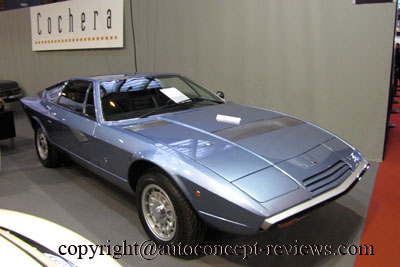 |
 |
| |
Mercedes
|
| |
1926 Mercedes Benz 630K supercharged short chassis- Axel Schuette
|
| The Mercedes 24/100/140 PS was a large luxury car designed by Ferdinand Porsche and introduced by Daimler in 1924. Production continued until 1929 by which time Daimler had merged with Benz & Cie as a result of which the car's name changed to Mercedes Benz Typ 630. |
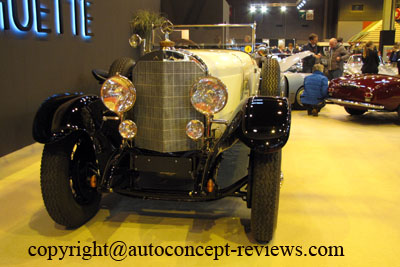 |
 |
 |
|
| |
1928 Mercedes Benz 680S Torpedo Sport model Cannes by Saoutchik - Axel Schuette
|
In 1927, Mercedes Benz introduced a new high performance sports car, the S which was directly suitable for racing events. This flat sporty silhouette was supported by the fact that the S and the SSK had a lower radiator grille compared to the K and the SS . At the request of the Mercedes Benz New York distributor, the car got the 2 seater torpedo sports cabriolet body named "Cannes" by Saoutchik . Approximately 8 Mercedes Benz 680S models received the two seats version of the "Cannes" body by Saoutchik.
related article: see Car Review Mercedes 680S - 26/120/280 S Type Torpedo Roadster Saoutchik 1928 |
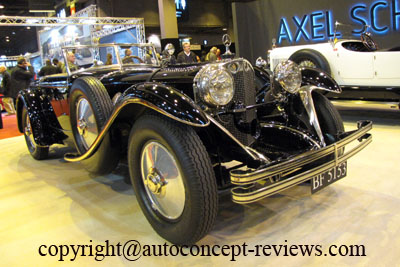 |
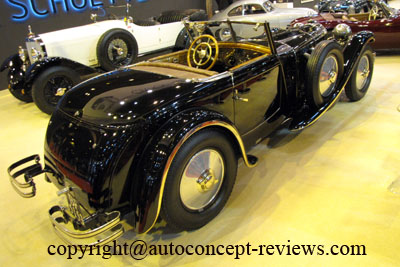 |
| |
1934 Mercedes Benz 500K Luxus Roadster W29 - Mercedes France
|
| related article see Car Review Mercedes Benz 500 K Cabriolet Spezial A 1936 |
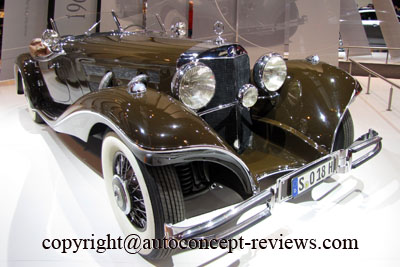 |
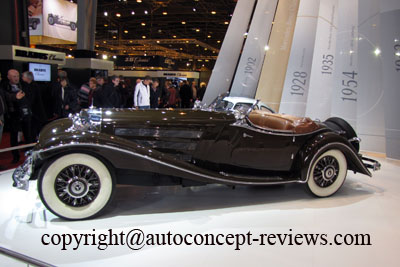 |
| |
1952 mercedes 300 SL W194 - Mercedes France
|
| related article see Car Review Mercedes 300 SL W 194 - Le Mans Winner 1952 |
 |
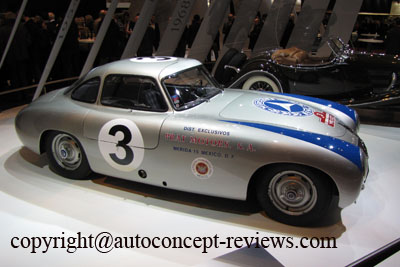 |
| |
1955 Mercedes Benz 300 SL Aluminium - Classic Sport Leicht
|
| related review : 1955 Mercedes Benz 300 SL |
 |
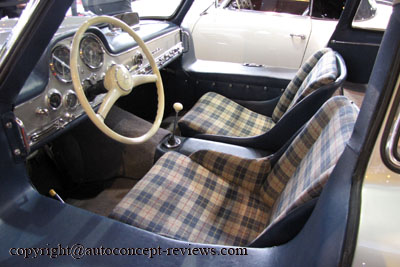 |
| |
1969 1970 Mercedes C111 Wankel Research Vehicle - Mercedes France
|
| related review : Mercedes C111 Wankel Research Vehicle |
 |
 |
| |
1978 Mercedes benz 450 SLC Rallye - Mercedes France
|
| |
 -1-400x267 Mercedes - IMG_3754.jpg) |
 -2- 400x267 Mercedes - IMG_3759.jpg) |
| |
1996 Mercedes Benz CLK GTR Coupé - Kienle
|
| related review : 1996 Mercedes Benz CLK GTR Coupé |
 |
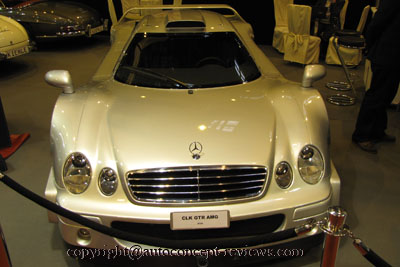 |
| |
Packard
|
| |
1929 Packard 645 Deluxe Eight Dietrich Dual Cowl - Axel Schuette Fine Cars
The Packard 645 Deluxe Eight was among the most well-engineered and refined motorcars of the time. This model was enhanced by the "Individual Custom Line" which featured 13 body styles from such custom body designers as LeBaron, Rollston and Dietrich. This particular Packard is one of a handful that received the rare Dual Cowl Sport Phaeton coachwork by Dietrich. |
 |
 |
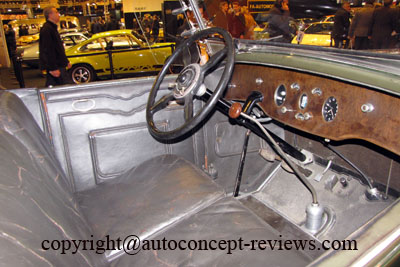 |
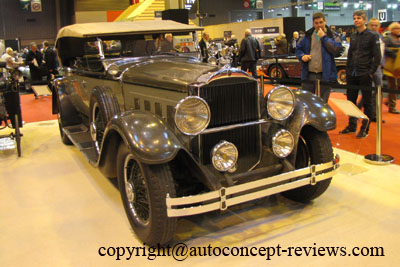 |
| |
| |
| |
Pegazo
|
| |
1955 Pegazo Z 102 Touring -exhibit Pueche
|
| related article: Car Review Pegazo Z102B Touring Berlinetta and Spyder 1951-1956 |
.jpg) |
.jpg) |
.jpg) |
.jpg) |
| |
P.S.A. Peugeot Citroën DS
|
| |
1934 Peugeot 301 CR Roadster Grand Luxe- Aventure Peugeot
|
| The production of the Peugeot 301 was initiated in 1932, alongside the 201 model of which it takes many elements but a more powerful engine. The 1.465 cc four cylinder engine produces 37 hp in the CR version. The Peugeot 301 CR is proposed in 8 versions of which this open roadster version. |
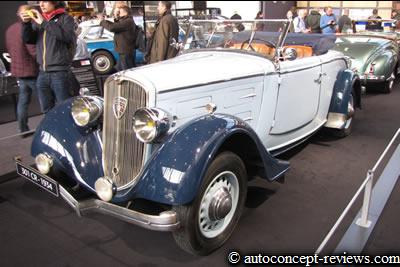 |
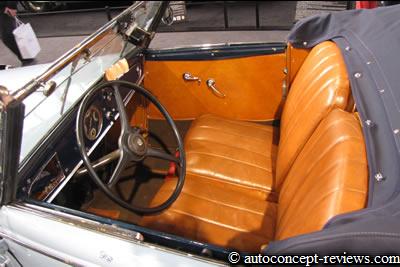 |
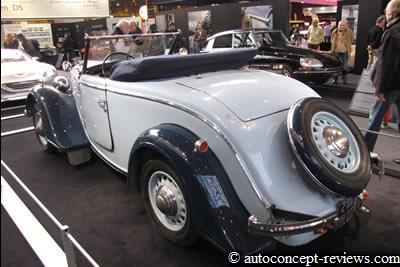 |
 |
| |
1946 Peugeot 402 DS Prototype
|
| This experimental vehicle was completed in 1946 with a particular research in reducing air resistance by adopting a "water drop shape" inspired by aeronautic technologies at the time. The engine was Peugeot 1991 cc with higher performance. |
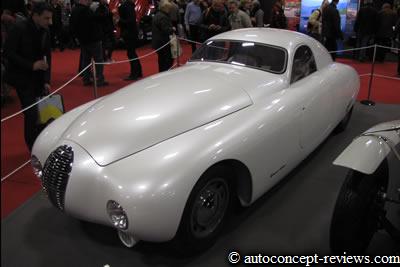 |
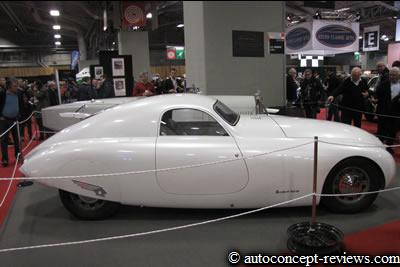 |
 |
 |
| |
1952 Peugeot 203 Cabriolet- Aventure Peugeot
|
| The Peugeot 203 was introduced in 1948 and has been produced in several versions in 685.628 units. The engine was a 1290 cc 45 hp four cylinder unit. In 1951, a cabriolet open version was proposed which was produced in-house with some specific elements until 1956 for a total 2.567 units. |
 |
 |
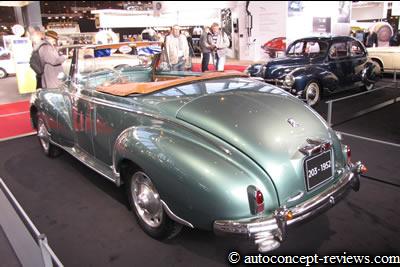 |
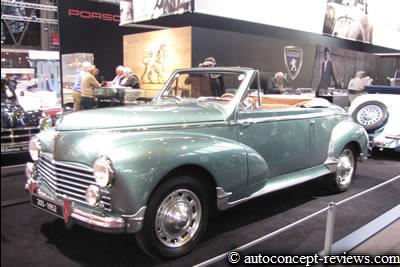 |
| |
1953 Peugeot Berline 203 Darl'mat - Aventure Peugeot
|
Between 1949 and 1956 120 Peugeot 203 Darl'mat have been completed with specific body and mechanical components for higher performance. Emile Darl'mat was an important Peugeot distributor in the Paris region and he prepared several upgraded version as well as a few competition cars that participated in Le Mans 24 Hours in 1937 and 1938.
related article see Car Review Peugeot 402 Darl’Mat Roadster 1940 |
|
| |
1960 Peugeot 403 Cabriolet Grand Luxe - Aventure Peugeot
|
| The Peugeot 403 sedan was introduced in 1955 and was the result of a collaboration between Peugeot and Pinin Farina. All versions included, the Peugeot 403 was produced at 1.214.121 units. Launched in 1956, the 403 Cabriolet has been developped in-house with a reinforced platform and extended doors. The Peugeot 403 Cabriolet was produced until 1961 in a total of 2.050 units. |
 |
 |
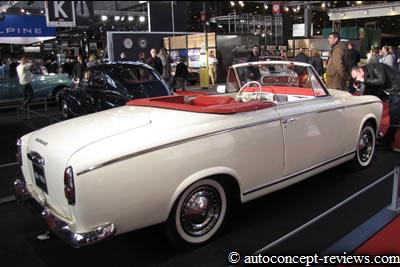 |
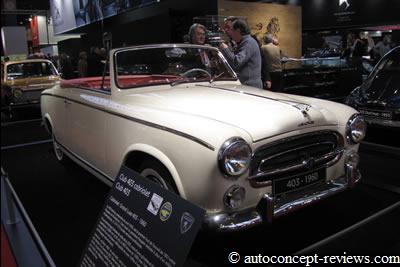 |
|
| |
2010 Peugeot SR1 Concept - Aventure Peugeot
|
| The Peugeot SR1 Concept unveiled in 2010 showed several stylistic solution that will be introduced in several production models. This Roadster Grand Touring concept integrated the Hybrid4 230 kkW/313 hp technology with four wheel drive and four wheel steering. |
 |
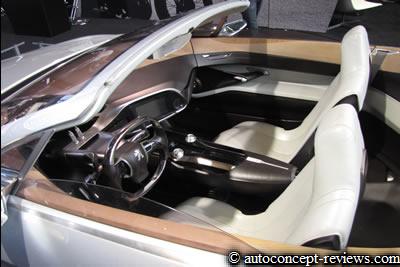 |
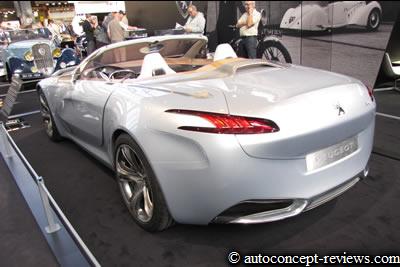 |
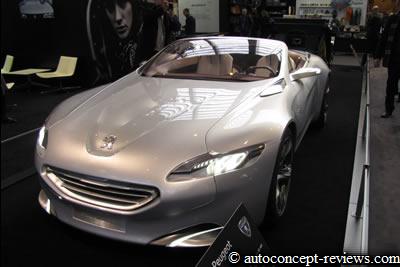 |
|
| |
2016 DS E-Tense Concept - D.S. Heritage
|
| related article: Car Review DS E-Tense Concept 2016 |
|
| |
Porsche
|
| |
1950 Porsche 356 Coupé Pre A Split window - Axel Schuette Fine Cars
|
| This Porsche 356 chassis N° 5377 with four cylinder engine was completed during the first year of production of the 356 when a total of 369 cars were produced. |
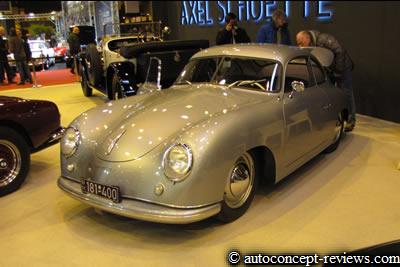 |
 |
 |
|
| |
1953-1954 Porsche 356 Pre A 1500S "Evita Peron" Panamericana- Atelier 540
|
| This fully restored Porsche 356 Pre A 1500S was entered in 1953 and 1954 by British actress Jaqueline Evans at the famous Carrera Panamericana with special commemoration to her friend Evita Peron wife of the Argentina President who was deceased one year before. |
 |
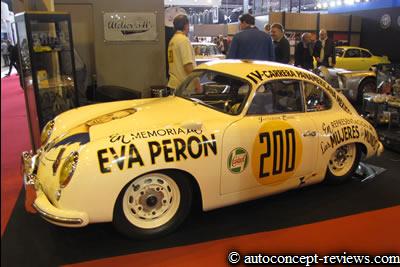 |
| |
 |
| |
1963 Porsche Carrera 2 GT - Fiskens
|
| This Porsche Carrera 2 GT with chassis N°125107 is one of sixteen prepared by the factory. It participated in the 1963 edtion of the Tour de France. |
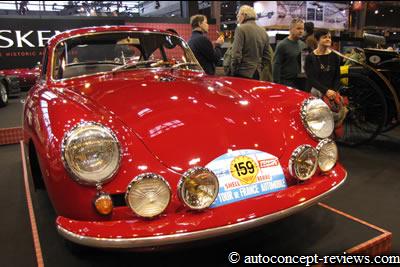 |
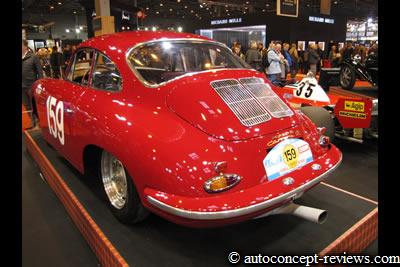 |
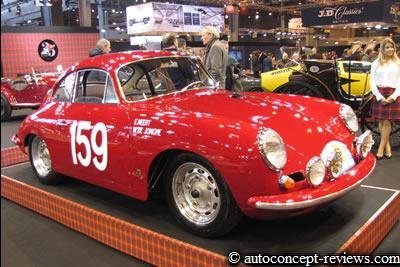 |
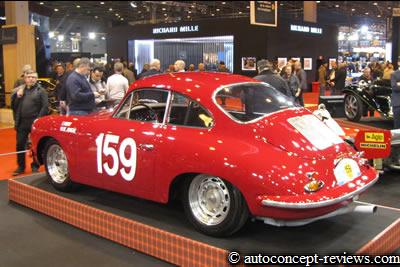 |
| |
1978 Porsche 930 Turbo 3.3 L - FIA
|
| |
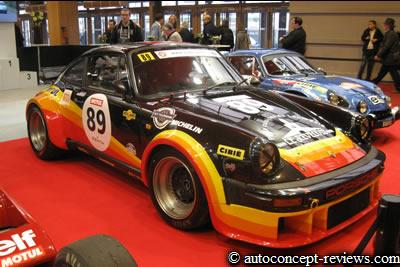 |
 |
| |
1981 Porsche 917 K81 -- Ascott
|
| This Porsche 917 K81 was entered in 1981 Le Mans 24 Hours edition. The Porsche flat 12 engine produce 600 hp at 7.500 rpm. Related article: Car Review Porsche 917 1969 1971 |
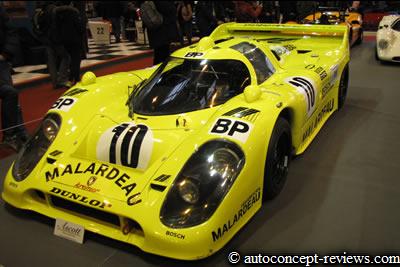 |
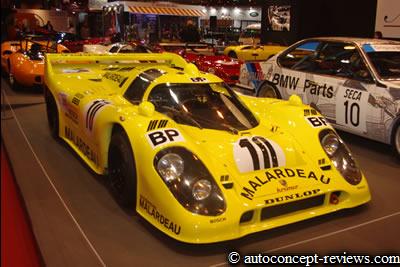 |
 |
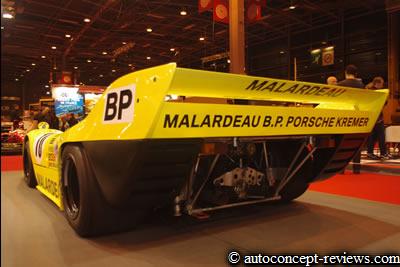 |
| |
1984 Porsche 928-4 or 942 four seats One-Off - Porsche Museum
|
| This one-off four seats special Porsche 928 was prepared by the Weissach factory for the 75th anniversary of Ferry Porsche. |
|
| |
1990 Porsche 962 -Mecauto
|
| related article Car Review Porsche 962C 1984 1994 |
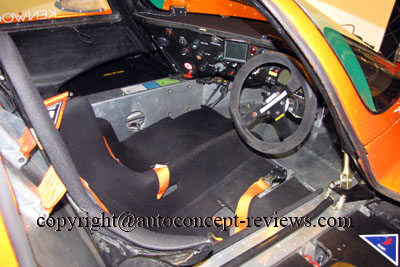 |
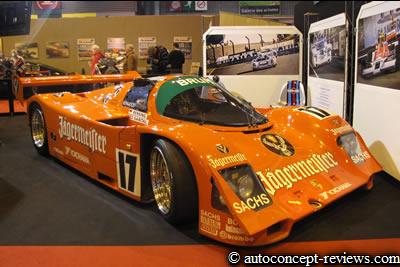 |
| |
Renault
|
| |
1922 Renault 40 CV Type JV- Renault Classic
|
| Prepared before the 1st World War the Renault 40 CV was officially launched after the war as the luxury model of Renault. The radiator is still located behind the engine and the "alligator" bonnet maintain the style of Renault at the time.The engine was a six cylinder with 9.120 cc powerind the rear wheels with a four speed gearbox. Claimed top speed is 135 kph. Overall length is 5,20 m width 1,80 m while the weight is announced for 2600 kg.
related articles see Car Review Renault 40CV NM Type JY Skiff 1923 , Renault 40 CV NM Record 1926 |
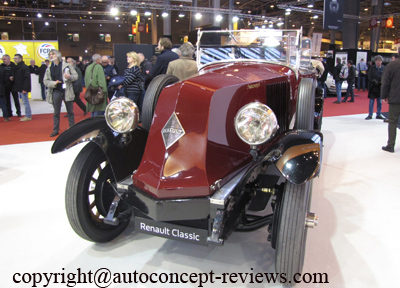 |
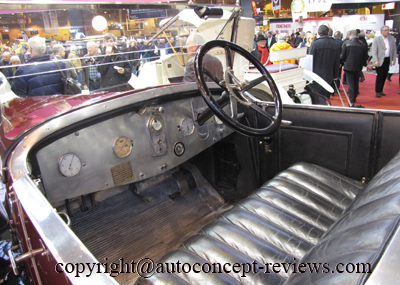 |
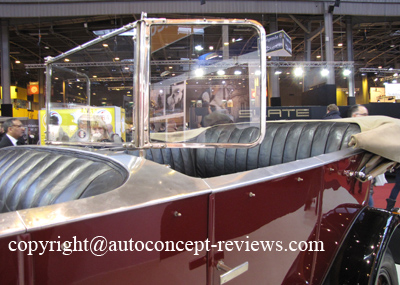 |
 |
| |
1932 Renault Reinstella - Renault Classic
|
| The Renault Reinstella was launched in 1929 as the successor of the 40 CV. This luxury car was propelled by a 7.125 cc six cylinder 110 hp engine. The length is 5,40 m, the width is 1,92 m and the weight is announced for 2700 kg. Claimed top speed is 145 kph. |
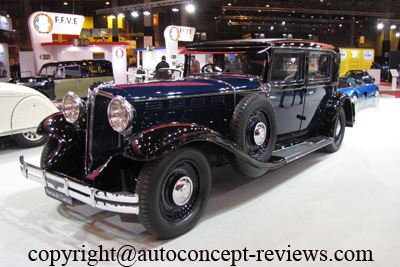 |
 |
| |
1935 Renault Viva Grand Sport Cabriolet Type ACX2- Renault Classic
|
| At the 1934 Paris Motor Show, Renault introduces its new lines of Via and Nerva with six and eight cylinder engine respectively. It is the occasion to change from square body style toward aerodynamic shapes. After the Vivastella sedan, Renault launches the Viva Grand Sport cabriolet in 1935. The 4086 cc in line six cylinder produced 95 hp. For a weight announced at 1520 kg, the top speed is claimed at 130 kph. |
 |
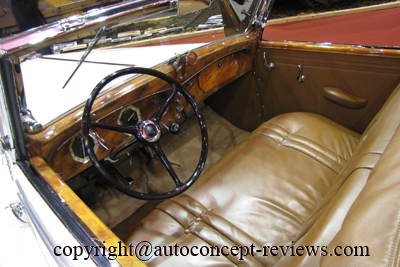 |
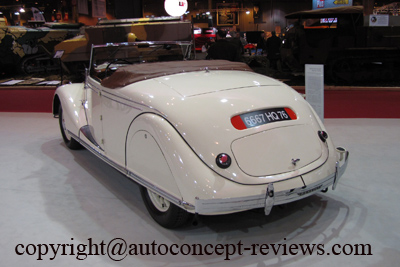 |
 |
| |
1961 Renault Floride - Renault Classic
|
| The prototype of the Renault Floride was introduced at the 1958 Geneva Motor Show. The Styling was resulting from a partnership between Renault and coachbuilders Ghia and Frua. The car was using the Dauphine mechanical elements with 845 cc in line four cylinder producing 40 hp. The weight is 780 kg. The top speed is announced for 125 kph. The Floride will be proposed on the market until 1963 when it will be replaced by the Caravelle. |
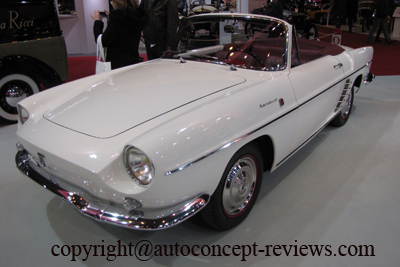 |
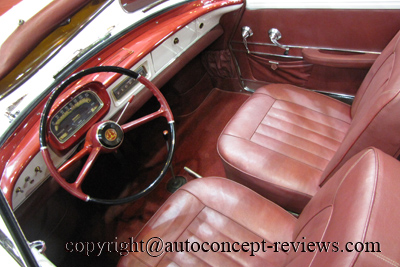 |
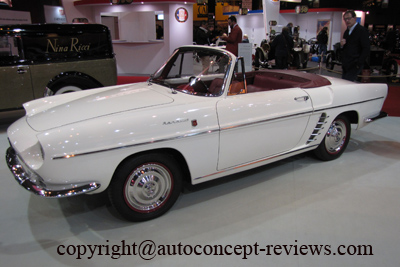 |
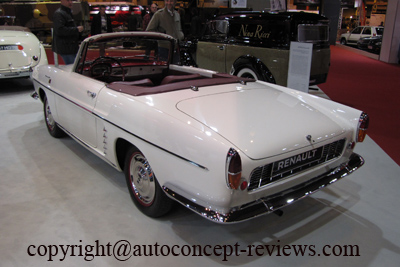 |
| |
1990 Renault Laguna Concept - - Renault Classic
|
| The Renault Laguna Concept was presented at the 1990 Mondial Paris Motor Show. It is a mid-engined roadster propelled by a 1995 cc turbocharged in line four cylinder producing 210 hp. |
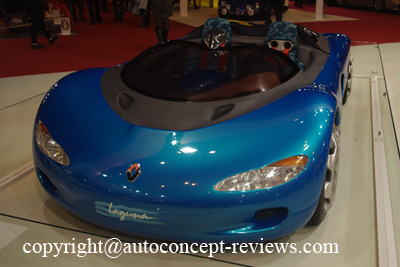 |
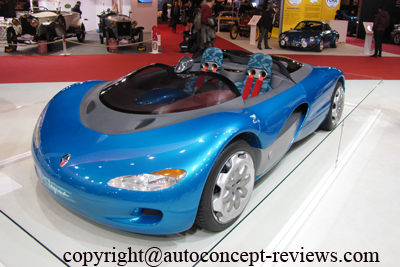 |
 |
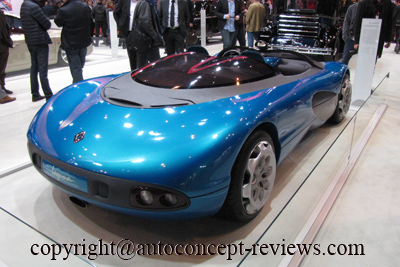 |
| |
1995 Renault Initiale Concept - - Renault Classic
|
| The Renault Initiale Concept was introduced at Bagatelle Garden in Paris on September 9th 1995. It showed a proposition of premium car. The Renault Vel Satis introduced later will take some ideas of the general styling proposition illustrated by the Initiale Concept. The Initiale Concept was defined to be propelled by a 3500 cc V10 producing 392 hp. The Initiale gained the 1996 Car Design Award at Louis Vitton Automobiles Classiques Concours. |
 |
 |
 |
 |
| |
2016 Renault Trezor Concept - Renault Classic
|
| related article: see Car Review Renault Trezor Pure Electric Concept |
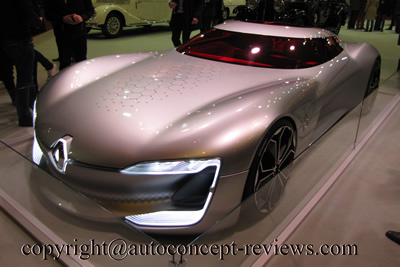 |
 |
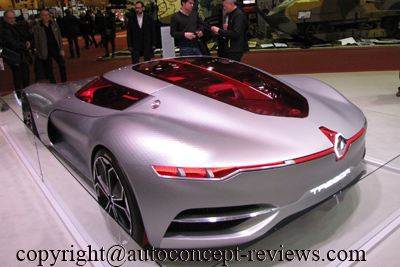 |
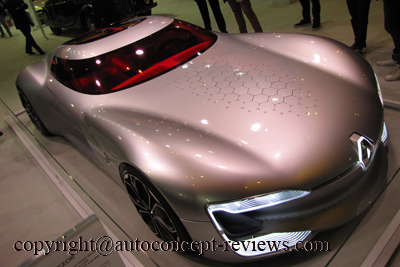 |
| |
| |
Artcurial Retromobile 2017 Auctions non exhaustive results
|
| 2017 Artcurial Auction Sales at Retromobile resulted in total sale of 32 M Euros that is an increase of 33% over the 2016 edition. 70% of the lots have been sold. We are showing here several automobiles sold during this auction. |
1966 Dino 206P Berlinetta Speciale sold for 4,390,400 €
|
The Dino 206P Berlinetta Speciale was prepared by Pinin Farina and exhibited at the 1965 Paris Motor Show. It is the prototype of a mid engined berlinetta by Ferrari. Enzo Ferrari at the time wasnot at all in favor of central engine for road going car. For this reason the prototype was introduced as a Dino in memory of the son of Enzo Ferrari. (source of excerpt Artcurial)
Related article: Car Review Pinin Farina Dino 206 GT Berlinetta Speciale 1965 |
 |
 |
| |
1948 Ferrari 166 Spyder Corsa by Scaglietti sold for 2,960,400 € -
|
| This Ferrari 166 SC Chassis 0141 was purchased originally by Giampero Bianchetti and raced by its owner as well as Fernando Righetti, Raymond Sommer and Giuseppe Farina. On initially leaving the factory in May 1948 with a 2420 mm long chassis, the 166 was fitted with an Ansaloni Spyder Corsa body with cycle wings. The car was returned to Maranello in 1955. Enzo Ferrari then sent chassis #014I to Scaglietti, the top-class coachbuilder in Modena. Satisfied with the new Monza/Mondial in 1954, Enzo wanted the chassis of this166 SC to provide a base for experimental bodies for future competition cars. (source of excerpt Artcurial) |
 |
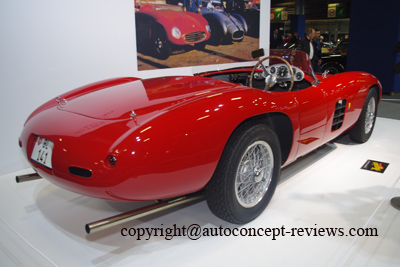 |
| |
1972 Lamborghini Miura SV -lot 75 sold for 2,388,400 €
|
- One of 19 examples with dry sump and air conditioning - One of two dry sump/air conditioned Miura SVs sold new in Europe - Just four owners, including one owner for 37 years - Superb presentation, 42,580 km - Matching numbers - (source of excerpt Artcurial)
related article: Lamborghini Miura SV/J 1972 , Lamborghini Miura SV 1971
|
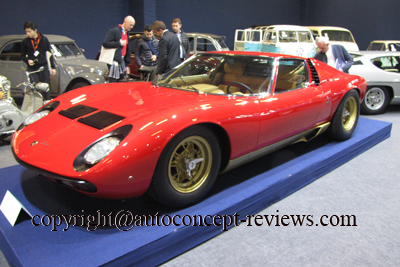 |
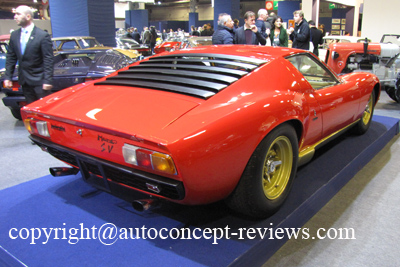 |
| |
1935 Bugatti Type 57 Atalante Decouvrable sold for 2,331,200 €
|
1st Atalante to be presented at the 1935 Paris Motor Show - One of just eight Atalante made originally with fold-down roof, the only example to have survived with its original chassis.
(source of excerpt Artcurial)
Related article: Bugatti 57 S Atalante 1938 , Bugatti Type 57 SC Atalante Coupé Gangloff 1937
|
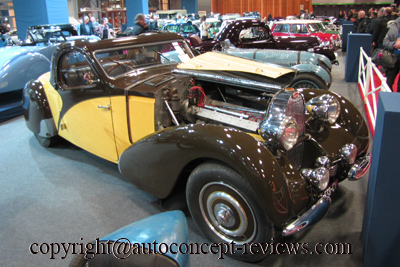 |
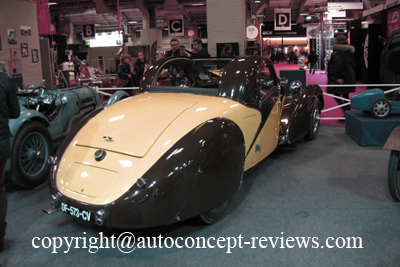 |
| |
1936 Talbot Lago T150C sold for 1,610,480 €
|
| The 1936 Talbot Lago T150C made the highest bid at Artcurial Auction during 2013 Retromobile in Paris, France; it was sold for 1,461,792 Euros. This Talbot Lago T150C is one of the six produced that accumulated quite a pedigree with four participation at Le Mans 24 Hours (1937,1938,1939 and 1949), 1936 ACF Grand Prix, 1937 Tourist Trophy or 1938 Spa 24 Hours to mention a few. more informations and pictures here |
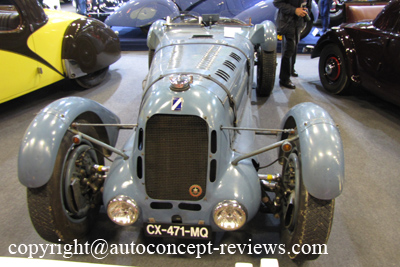 |
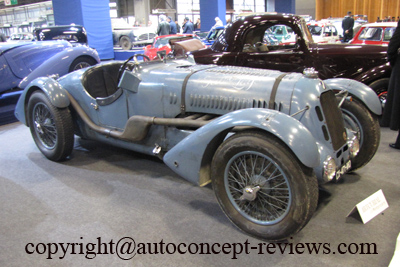 |
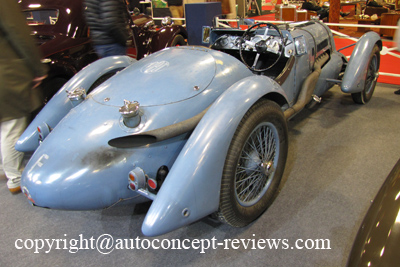 |
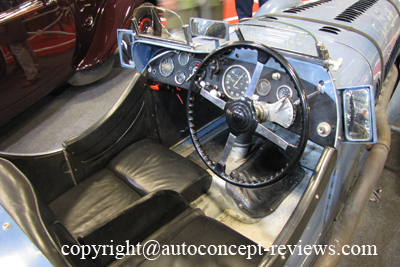 |
| |
-1968 Lamborghini P400 sold for 888,040 € -
|
| - Superb restoration by Bacchelli e Villa - Part of a prestigious Italian collection since 1989 - Regularly used and maintained - Original engine - Coming from an important Milanese collection This Miura is a second series P400. It was delivered new to Auto Elite dealership in Italy in July 1968, presented in Miura green with black leatherette interior. The current Italian owner bought the car in the United States in 1989. As it had been damaged and required a full restoration, it was brought back to Italy for the work to be overseen . (source of excerpt Artcurial) |
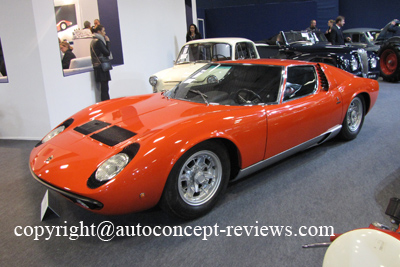 |
| |
1970 Ferrari 365 GTB4 Daytona by Scaglietti -sold for 705,600 € |
- Ferrari certified - Air-conditioning and matching numbers - Beautiful aesthetic and mechanical condition Lamborghini paved the way for a new configuration for high-performance sports cars, with a mid-engine format which allowed for a lower centre of gravity and improved weight distribution. However, when comparing the stability at high speed of a Lamborghini Miura and a Ferrari Daytona, one understands Enzo Ferrari's decision: the Daytona doesn't move an inch whereas the Miura has a tendency to lift at the front. (source of excerpt Artcurial)
related review : Ferrari 365 GTB4 Daytona Prototype 1967
|
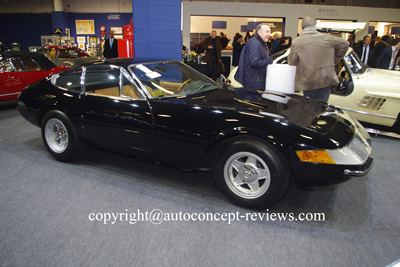 |
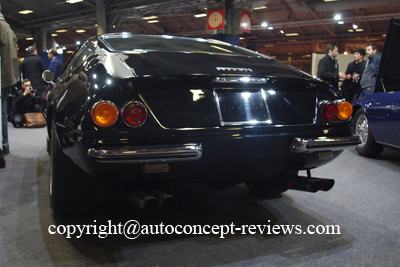 |
| |
1968 Bizzarini 5300 GT Strada sold for 705,600 €
|
| 0309 - High quality restoration - In the same ownership for 27 years - High performance - Used carefully This Bizzarrini GT Strada was bought by Hervé Ogliastro in April 1990 at an auction held by Maître Poulain. (source of excerpt Artcurial) |
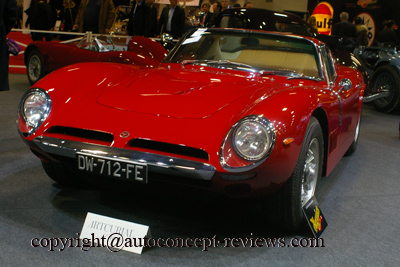 |
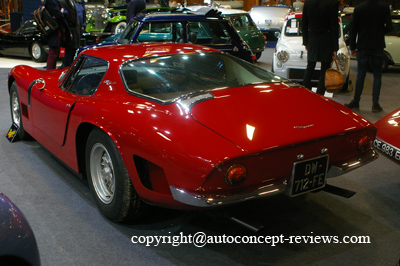 |
| |
1957 OSCA Tipo S273 sold for 578,120 €
|
| 1187S - Real barchetta designed by the Maserati brothers - Interesting racing history - High quality restoration O.S.C.A. a genuine Maserati ! In 1937, Maserati was on the brink of bankruptcy and the brothers sold their company to the Orsi family while staying on in the business. On 1 December 1947 they wanted to regain their independence, but, as they were legally not allowed to use the family name again, the new marque became known as O.S.C.A. (Officina Specializzata Construzione Automobili). O.S.C.A.s are widely recognised as genuine Maserati today. There is, however, still some confusion over the different models and engines. To clarify: apart from the 4.5-litres (3 engines built), the Formula Juniors (with 1100cc pushrod Fiat engine) and the 2-litre six-cylinders, there are three different O.S.C.A variants - the MT4, the Type S and the 1600 GT. The MT4 : The initials standing for Maserati Tipo, the MT4 was the first series to appear in 1948. The tubular chassis had independent front suspension with wishbones and the rear axle was rigid with semi cantilever. It had a 4-cylinder engine with a five bearing crankshaft, which was soon fitted with a twin overhead cam cylinder head. The engine was available as 1100cc or twin-ignition 1500cc. The MT4 is the best known O.S.C.A., having clocked up multiple class wins in the Mille Miglia and won at Sebring outright in 1954, raced by Stirling Moss. In September 1955, a 1500cc version achieved 12 world speed records including 261.38 km/h over 10k (this car is on display in the Mulhouse museum today). The Type S : the model in the sale. This model benefitted from an evolution of the MT4 chassis. It had the same front axle but the chassis was widened to lower the centre of gravity. The real innovation was the redesigned engine. It was still a twin overhead cam 4-cylinder unit but was lighter, more compact and very powerful. The engine was built in different sizes : 750 cc, 1100 cc (the S 273 in the sale), 1500 cc and 2000 cc. (source of excerpt Artcurial) |
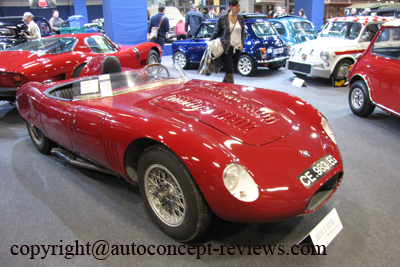 |
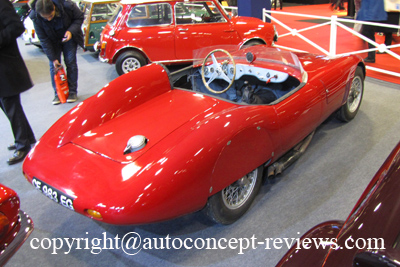 |
| |
1963 Porsche 356 Carrera 2 GS sold for 548,320
|
- Mechanically refurbished and well set up - One of the rarest and most highly sought-after 356s - Original colour combination The official Porsche "Kardex" tells us that this car left the factory on 25 April 1963, with engine n°97253. It was liveried in "Schiefergrau 6201A" (slate gray), with red leatherette interior, the colour scheme it has today. It was also fitted with headlight protectors.
. One of the most distinctive features of 356 Carrera is the engine, which, like the 550 Spyder, was developed from competition versions. It was designed with two overhead cams per bank and twin ignition, which allowed a significant increase in power. The car on offer is a genuine Carrera 2 with 2000 GS engine. This is one of the rarest, most iconic, powerful and highly sought after models in the 356 family, of which under 500 examples were produced. (source of excerpt Artcurial) |
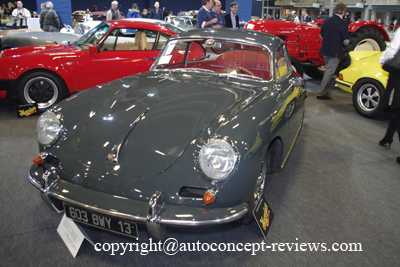 |
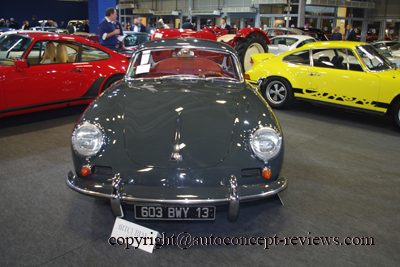 |
| |
-1971 Iso Grifo Serie II sold for 441,040 €
|
| - A very rare Grifo 7.4 Litri - Same owner for 29 years - Interior with patina, original engine The assembly sheet of this car, a copy of which is attached to the file, confirms that it is indeed a Series II "7 Litri" with a ZF gearbox. It also mentions a "long" final drive ratio of 2.88: 1. It was originally in a blue shade with black upholstery and is one of the very rare "Can-Am" IR-9 versions, powered by a Chevrolet Corvette engine of 454 ci (7.4-liters) developing nearly 400bhp. Of a total of 413 Iso Grifos made, there are just about 20 Series II cars and this one is the only one of this type that was sold new in France. (source of excerpt Artcurial) |
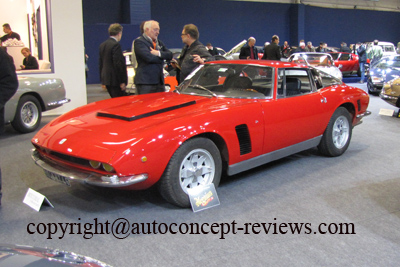 |
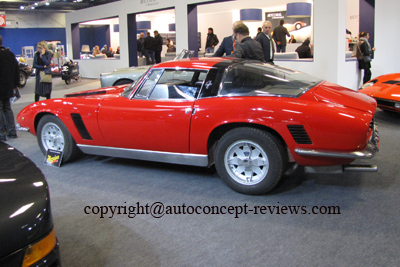 |
| |
|
1984 March 84G Kreepy Krauly Gr C sold for 357,600 € -
|
| Without registration Competition car Chassis n° 84G.03 - Porsche 956 engine - Extensive racing provenance including Le Mans 24 Hours (1986 edition), Sebring, Daytona - Eligible for Group C historic events - this March 84G is one of two fitted with the 700bhp Porsche 956 IMSA engine. (source of excerpt Artcurial) |
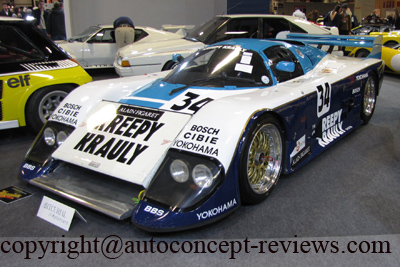 |
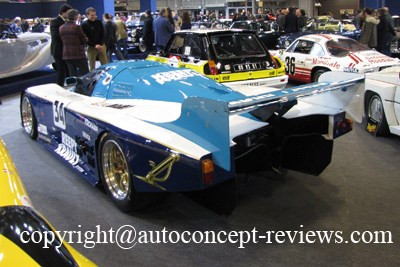 |
| |
1982 Renault 5 Turbo Group 4 J Ragnotti sold for 321,840 €
|
- Genuine factory car - Restored by the Boszian brothers - The Renault 5 Turbo of Jean Ragnotti : The last Group 4 Before Group B !
Gérard Larousse and his team had to wait for 400 examples of the production series to be built for homologation in Group 4 that would allow the R5 Turbo to compete in major international competitions. This was achieved by September 1980, just before the Tour of France. The engine specification for a Group 4 was the same as on the " Tour de Corse " version that appeared in 1983, but a little less powerful (approximately 260 bhp according to period reports in the press). (source of excerpt Artcurial) |
 |
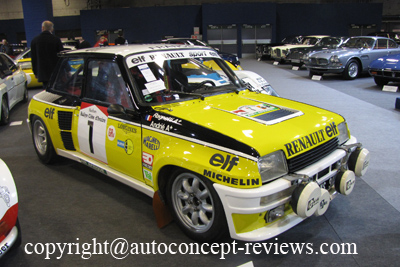 |
| |
1969 Bizzarini GT Europa 1900 sold for 305,152 Euros
|
| - One of 12 cars finished at the Bizzarrini factory - Rare model - Beautiful restoration and Best of Show 2015 Essen Motor Show - Displayed at the Paris Motorshow 1969 - The Raging Bull Collection In 1966 the renowned engineer/car producer Giotto Bizzarrini was approached by a wealthy client of his who came up with the idea to build a smaller and cheaper car for the Italian sports car market. To do so, the client applies for the generous state grants that were given at the time to support business enterprises in southern Italy. Bizzarrini liked the idea and gave the job of designing the car to his in house stylist Pietro Vanni. Bizzarrini built the frame himself and made a deal with GM to equip the car with the 1900cc Opel GT engine mated to a ZF gearbox producing 110hp. The Europa was finally unveiled at the 1967 Turin Auto Show and became an immediate hit. The orders piled in but Bizzarrini already had big supply problems with the Strada models he was producing and he couldn't find a reliable body supplier for the new Europa. Supply problems, along with financial troubles and unreliable partners, led Bizzarrini into bankruptcy in 1968 even though the order books were full. Only twelve Europa GT 1900s having been produced. (source of excerpt Artcurial) |
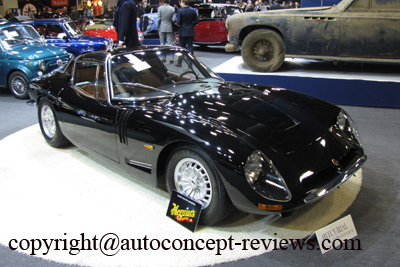 |
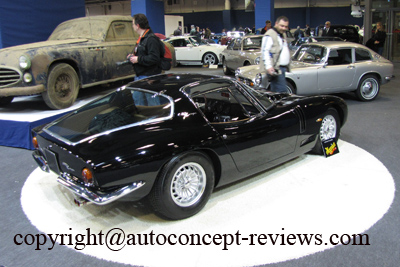 |
| |
1972 Alpine A110 Berlinette Gr 4 sold for 298,000 € -
|
Genuine competition-client car built by the factory - Interesting and continuous history - Raced widely by Bob Wolleck and victories in the Tour Auto Classic with Jean Ragnotti Liveried in "La Défense Mondiale" colours, this car is almost more famous for its exploits in historic racing, driven by Jean Ragnotti, than for its period racing results. However they were impressive, with a 14th place in the 1973 Monte Carlo Rally car driven by Bob Wolleck and Pierre Thimonier. This Type 1600 VC Alpine berlinetta was completed on 29 November 1972, one of seven "client competition" versions sold by the factory at the end of 1972 to selected clients. (source of excerpt Artcurial)
related article: Car Review see Alpine A110 1962 to 1973 - Road and Racing version
|
Following in the tire tracks of the venerable A106 and A108, the A110 was also part of the fruitful partnership between Renault and Alpine, a guarantee of quality for enthusiasts and a promise of victory in competitions the world over.
The Alpine A110 was unveiled at the Paris Motor Show in 1962. The new vehicle featured the steel backbone frame, glass-fiber polyester bodywork and offset rear-mounted engine of its illustrious predecessor. It also used parts from Renault production models, particularly the R8. It was thus a powerful and efficient model, featuring all the improvements made to Alpine models over the years. The Alpine A110 did, however, feature one innovation: the 4-cylinder Renault engine with 5 bearings. To make room for it, the rear end of the vehicle had to be made bigger. This gave the A110 an “aggressive” style that remained its hallmark. more pictures and informations here |
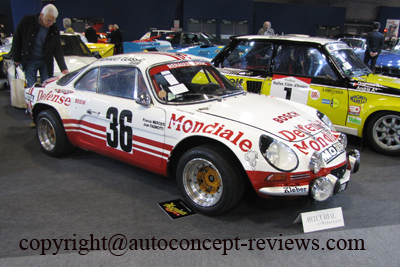 |
| |
1953 Cadillac Serie 62 Cabriolet Custom by Boyd Coddington sold for 270,000 € -
|
| - Johnny Hallyday's custom Cadillac - Unique model - Prepared by the King of Custom, Boyd Coddington - . Coddington is the biggest name in the hot-rod world. . Boyd proposed a project that would completely transform the Cadillac into a dream machine in the purest traditions of American post-war custom cars. The Cadillac was duly dismantled, part by part. It was given a Chevrolet Corvette 502 fuel injection engine, 700 Transmission, reinforced chassis by Morrison, interior hand-made by Coddington's upholsterer, Gabe, embroidered with the initials JH on the seats, and chrome-work by Sherm. The body was totally rebuilt down to the last details by Bernt Karlsson. The bumpers were redesigned, and the headlights fitted with a modern electric system. It was given a special livery in Coddington's workshop, painted in cobalt blue with Ghost flames. The transformation of this superb and totally unique custom car took over 400 hours. Johnny Hallyday collected his car in 2010 and has since driven it regularly around Los Angeles. (source of excerpt Artcurial) |
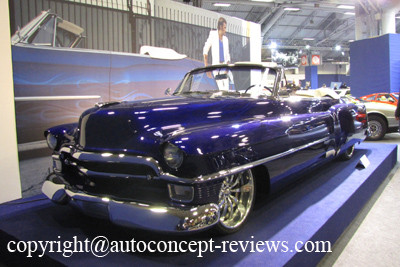 |
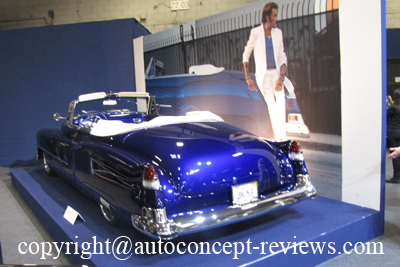 |
| |
1974 Dino 246 GT Tipo E sold for 269,392 € -
|
| Original upholstery - Never restored, in an original state Produced in May 1973 and delivered new in France, this car was registered for the first time on 30 July, 1974. The current owner acquired it in May 1978 from one of his acquaintances, thus it has been in the same hands for 38 years! It has never been restored and was only repainted in red, the previous shade and probably the original one was yellow. The car features electric windows (an option on this series), a Voxson Stereo 8 car radio, beautiful Campagnolo alloy wheels and the odometer displays 84,584 km. (source of excerpt Artcurial) |
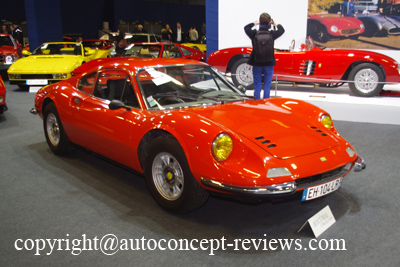 |
 |
| |
1969 Lamborghini Espada P400 GT Serie I sold for 268,200 €
|
| One of the very first Espada - Most desirable 1st series, matching numbers - One of the first 50 examples fitted with the rear iron bars - The Raging Bull Collection The series 1 Espada's design derived from the spectacular Lamborghini Marzal from which it kept the octagonal instruments and the "designed" interior. This Lamborghini Espada Series 1, chassis number 7189 was the 39th car built. . Being a 1st series car, this outstanding example is the most exclusive and sought after Espada, moreover the rarest as only 186 cars were produced. (source of excerpt Artcurial) |
 |
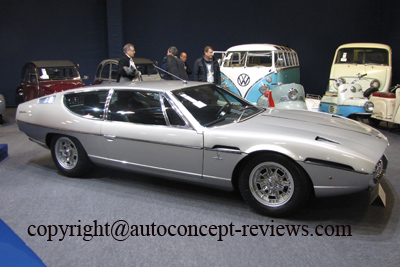 |
| |
1985 Peugeot 205 Turbo 16 sold for 172,840 €
|
Entered by Leandri in the 1985 Tour de Corse The car sold here is a Peugeot 205 T16 series 200, manufactured in its road version at just 200 units to get homologated in Group B. This is the 12th car of the series and was registered on January 24, 1985. Its history is fairly well traced. Its first owner, Mr. Leandri, raced it at the Tour de Corse in 1985, and the same year the Rallye du Maquis. Since then it has had only four owners. (source of excerpt Artcurial)
Related article : Peugeot 205 Turbo 16 – World Rally Champion 1985 - 1986 – Paris Dakar Winner 1987 -1988 – 2nd Pikes Peak 1987
The Peugeot 205 Turbo 16 project is unveiled in 1982, the first prototype is built in 1983. In 1984 the car achieve its first victories before winning Wolrd Rally Championship (WRC) in 1985 and 1986. review and more pictures continues here |
 |
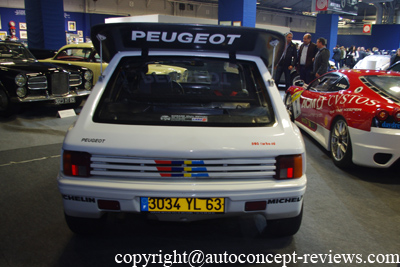 |
| |
1986 Ferrari Testa Rossa sold for 166,880 €
|
| Ten years earlier, the 365 GTB4 " Berlinetta Boxer ", followed by the 512 BB had made an impact, but by 1984, it was time to look for a successor. Remaining loyal to its traditional coachbuilder, Ferrari entrusted Pininfarina with the design for the all-new Testarossa. It would keep the same flat 12 engine set-up. The rocker covers were painted red, allowing the famous word " Testarossa " to reappear, a name associated with the sporting successes of the 1950s. With close to 400 bhp giving a top speed of nearly 300 km/h and clothed in a shape that took the breath away, this powerful GT car wowed the crowds from the start. - Only 36,170 km from new - Carefully maintained, servicing up to date - Full set of six suitcases - (source of excerpt Artcurial) |
 |
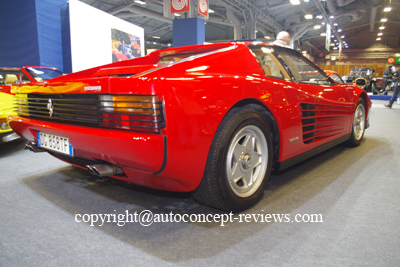 |
| |
1962 Citroen DS Concorde by Chapron sold for 157,344 €
|
| Exhibited at the 1962 Geneva Motor Show - One of just 37 or 38 examples built This car was delivered new from the Henri Chapron workshops on 13 April 1962 to a M.Tronchère who lived near Paris. It was built on the base of a DS cabriolet supplied by the very same workshops on 6 February that year. It took just one month to build, as a Chapron document states: " delivery promised for the Geneva Motor Show on 13 March 1962 ". The car was exhibited on the Chapron stand along side a range of other models that included a Le Dandy coupé. The final sale price for the DS was set at 30 334,85 francs. This was very expensive as a standard DS saloon cost 12 920 francs, and you could buy a Porsche 356 Super 90 for 28 000 francs. (source of excerpt Artcurial) |
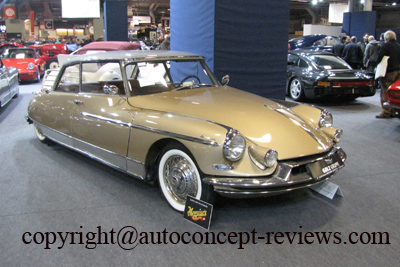
|
 |
| |
2006 Ferrari F430 F1 Challenge sold for 143,040 €
|
FIA document Race car Chassis n° ZFFEX63X000146816 - The most successful Ferrari Challenge in the world - An affordable investment - Fantastic performance, can be driven on circuits. Introduced in 2004, the F430 is part of the Ferrari V8 line, replacing the 360 Modena. It benefitted from development carried out on the Ferrari Enzo and technology acquired in F1. It was given an " E-Diff " differential and running gear managed electronically, with five positions operated by the manettino on the steering wheel. These driving aides allow the driver to exploit the 490 bhp of the 4.3-litre engine safely.
Belonging to the exclusive " over 300 km/h " club (top speed of 315 km/h), the Ferrari F430 can cover a kilometre from a standing start in 21.6 seconds. A "Challenge" version was developed so that cars could be contested in a one-make championship series in Europe and the rest of the world. (source of excerpt Artcurial) |
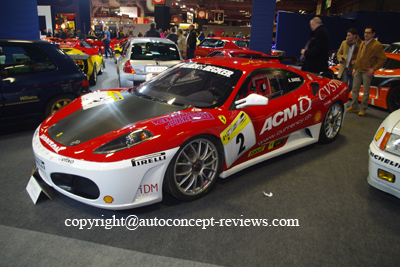 |
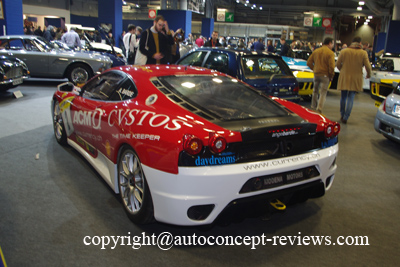 |
| |
1973 Lamborghini Urraco P250S sold for 137,080 €
|
| One of 336 examples produced - One owner from new to 2014 - The Raging Bull Collection This Lamborghini Urraco P250 S is chassis number 15420 and the 196th built. (source of excerpt Artcurial) |
 |
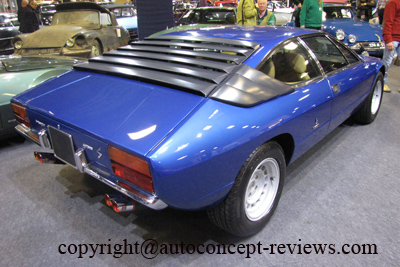 |
| |
1934 Citroen Traction 7 Sport Roadster sold for 121,584 €
|
| The Citroen 7S Traction Avant was created with the obvious aim of expanding the range with a more powerful model. Derived from version 7B, it was distinguished by a more powerful 11hp engine. The 7 Sport is very rare in its roadster version. - High quality restoration -(source of excerpt Artcurial) |
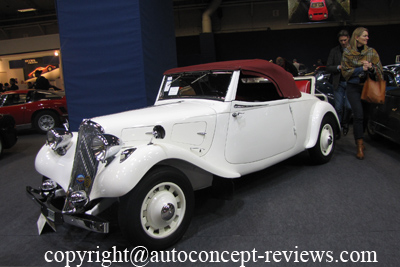 |
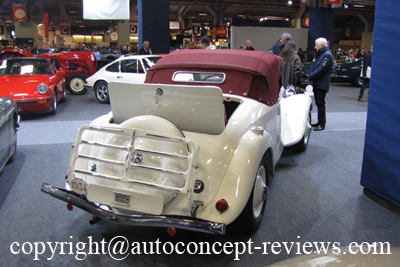 |
| |
1901 De Dion Bouton Type G Vis-a-vis sold for 107,280 €
|
- Three owners since new - In an exceptional state of origin - The body is original; the wings (probably redone) are in wood and the enclosed rear seat corresponds to the Luxe version of the model. The comprehensive equipment of the car includes a traveling trunk, a leather cowling around the mechanicals, a tail lamp, two lanterns, a horn, a hood, a windscreen and a half roof over the driver. The two front seats are removable to transform this vis-à-vis to two seats facing the road. The single-cylinder engine is equipped with a De Dion carburetor and an electric ignition with a modern coil, but the original De Dion-Bouton coil is still in place. The water pump has fins and not gears, the wheel hubs are smooth with grease nipples and the intake valve measures 38mm, which shows that this model belongs to the second series of Type G. In good working order, this car has the dating certificate number 196 issued on 3 December 1963 by the Veteran Car Club of Belgium, and as can be seen in the accompanying file, it took part - between 1966 and 1967 - in several rallies in France and Europe. It is certainly one of the best-preserved and best known De Dion vis-à-vis among those which have survived to the present day. (source of excerpt Artcurial)
related review : De Dion Bouton Type E 'Vis à Vis' 1900 |
 |
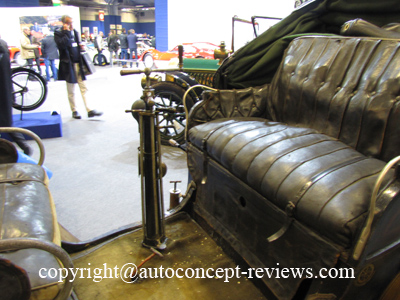 |
| |
1935 Alvis Speed Twenty sold for 103,704 €
|
| - Perfect pre-war car to drive - Old-fashioned English charm - Collection Dr.Arnold Kawlath Launched in 1931, the Alvis Speed Twenty was equipped with a straight-six engine and three SU carburettors that produced 87 bhp. It benefitted from an updated and lightened chassis. Improvements were made in subsequent years and the SC model, as presented here, boasted a more powerful engine (2 762 cc) developing nearly 100 bhp. It was fitted with a four-speed transmission. Common for cars with a separate chassis, the Alvis Speed Twenty on offer lost its original saloon body in favour of something more refined. In 2000, Trevor J Hirst Restorations fitted the car with an elegant four-door, four-seater cabriolet body in the style of Cross Ellis, one of the coachbuilders preferred by the Alvis clientele at the time. (source of excerpt Artcurial) |
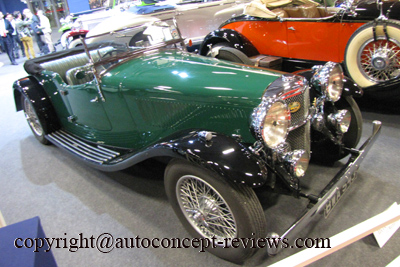 |
 |
| |
1988 Ferrari 328 GTS sold for 88,208 €
|
| Having rolled out of the Maranello factory in July 1988, this Ferrari 328 GTS was sold new in Zurich, Switzerland, in June 1989. This European version in red (ref FER 300) with caramel interior is equipped with electric windows and mirrors, as well as air-conditioning. Its meter displays 28,860 km, as confirmed by the maintenance booklet and the invoice folder. (source of excerpt Artcurial) |
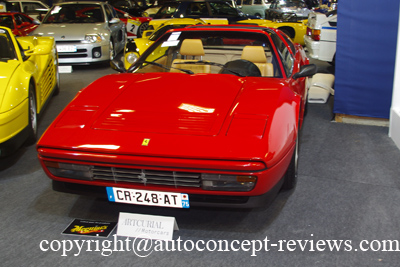 |
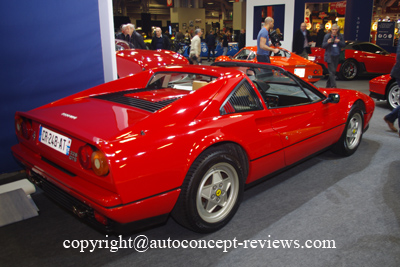 |
| |
Delahaye 235 coach Chapron, Collection Roger Baillon sold for 83,440 €
|
| A piece of history - Sound car, with beautifully preserved interior - From The Baillon Collection This Delahaye 235 is definitely a rare example and, under the dust that has accumulated over 40 years of non-use in the Roger Baillon castle, the car appears to be complete and sound on its wire wheels. Nothing has been touched or vandalized, the engine contains its accessories, but the best surprise is the interior: except for a tear in the passenger door and the bottom of the driver's door, the seat leather is well preserved and has a beautiful patina with a manufacturing quality that shows the quality of Henri Chapron. The dashboard instruments look complete, with the exception of the radio. The odometer shows 40,618km, and in the trunk, we found the spare wheel, jack and crank. Henri Chapron produced just 41 sedans of this final production model Delahaye, out of a total production of about 85/86 chassis 235 between 1951 and 1954. (source of excerpt Artcurial) |
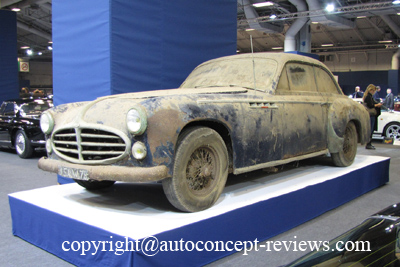 |
 |
| |
1908 De Dion Bouton BI 15-18 HP Double Phaeton sold for 77,480 €
|
| After buying the chassis of this De Dion Bouton, Hervé Ogliastro, a car collector, found a body and decided to completely rebuild the car in the workshops of André Lecoq. Several accessories were found, including the lighting elements (BRC acetylene headlights) and a 1914 mascot "The Policeman" signed by Leverier, and several missing pieces and panels were rebuilt. The restoration strictly respected the presentation and the techniques of the times. In its present condition, with its sober green colour, its nickel-plated accessories, its dashboard instruments marked De Dion, its elegant oil canister fixed on the awning and its four-cylinder twin-block, the car seems almost in original condition, without looking too "new", like total restorations sometimes do. (source of excerpt Artcurial) |
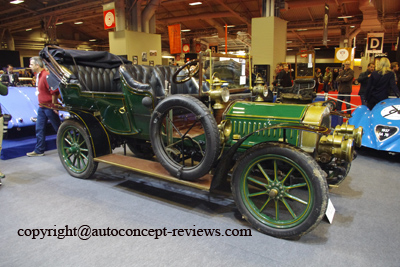 |
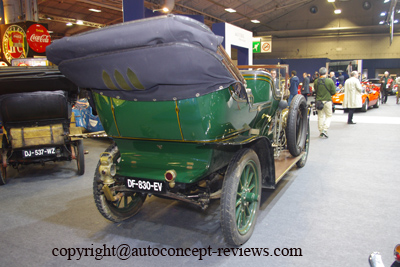 |
| |
1986 Citroen BX 4 TC sold for 63,798 €
|
| - Delivered new to Franco Sbarro - Street version of the mythical Group B - The BX 4TC represents Citroën's attempt at engaging into World Rally Championship at the time of the famous Group B era. For homologation, the manufacturer had to produce 200 cars and consequently developed a road version on the base of the BX, powered by a turbocharged 2141cc engine developing 200bhp, with a four-wheel-drive system. On the "Evolution" version for the official team, the specifications were more sporting and max power reached 380bhp, yet it wasn't good enough and the BX 4TC was finally withdrawn from the championship.Total production, executed at Heuliez, would total up to just 86 units, though the cars were to have been destroyed by Citroen, under the supervision of a bailiff. Rumor though says that Citroën offered the owners of the "4TC" to buy them back at twice their value. Whatever be the truth, it is unquestionably a very rare model, of which only forty examples are said to remain. The example on offer is in mint condition today and covered only 220 km since new. (source of excerpt Artcurial) |
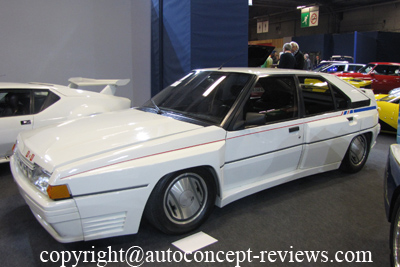 |
| |
1966 Abarth 1000 TC Berlinetta Corsa sold for 53,640 €
|
 |
This car is a very beautiful and sought-after Abarth 1000 TC series 2 from 1966. It was comprehensively restored in 2016 by Ateliers British Passion and is therefore in excellent condition. The car was completely disassembled, the body was completely stripped back to bare metal and it was repainted in its original "Bianco Caldo Gara" white. The running gear was sanded and repainted and the electrical elements were redone. The engine block was opened up to be overhauled. The reassembly of the car included new upholstery as well as original Abarth parts, respecting the original specifications of the car. The decorative elements of the bodywork embellish the look of this TC. (source of excerpt Artcurial) |
| |
1981 Aston Martin Lagonda Serie I sold for 53,640 €
|
| The Aston Martin Lagonda is without a doubt one of the most eccentric cars ever made by Newport Pagnell. From the mid-1960s, a 4-door saloon was under construction, but it only made it to the prototype stage in 1969 just before the project was shelved. In 1974, a Series 4 four-door Lagonda was launched but only 7 models were ever built. In 1975, when the brand had just filed a petition for bankruptcy, William Towns was given carte blanche to develop an avant-garde project and modernize the brand's image. The Aston Martin Lagonda, with edgy and futuristic lines, was unveiled in 1976 and brought to market in 1978. The car, which is both long (5.25m) and low (1.30m), was a technological showcase for the brand. Faced with development problems with the Series 1, the Series 2 model, which was released from 1984, was made more reliable and the onboard computer was revised. The powerful 5.3L V8 offering 300 hp coupled with a 3-speed Torqueflite automatic gearbox made by Chrysler was able to propel this gigantic but elegant saloon to more than 230 km/h. Only 645 cars have been manufactured between 1974 and 1990. (source of excerpt Artcurial) |
 |
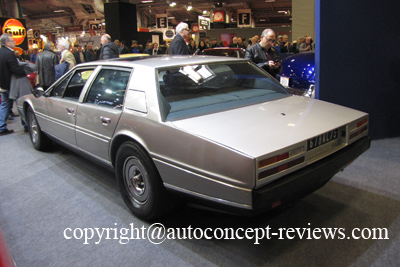 |
| |
1971 Chevrolet Chevelle SS 454 sold for 45,296 €
|
| Until 1970, General Motors had forbidden the assembly of over 400ci engines for their "mid-size" bodied cars. With the lifting of this ban, appeared the Chevelle SS, the most powerful of all time, with a V8 454ci engine developing 360bhp on the version LS5, the example we are offering (450bhp was for the LS6 version). As per its factory sheet, this car is indeed an authentic SS454 version, equipped with the TH400 automatic box. Among its many equipment, it is fitted with the (low) power steering, disc brakes, air intakes on the hood (Coil Induction), sports steering wheel and radio. Imported from Florida in 2005, it has since been restored over almost two years, for an amount of more than €53,000 (invoice folder available). The original design was perfectly adhered to, while the mechanicals had already been extensively prepared in the USA: Edelbrock 2161 intake manifold, Holley 750 CFM carburetor, L88 camshaft kit, reinforced distribution system, intake 4 in 1 manifold, high pressure water pump... In this configuration, our model would be capable of almost 450bhp, and to handle this significantly greater power, it has been equipped with four Koni Sports shock absorbers. Coming with its original manuals, this rare muscle car has been comprehensively restored and meticulously prepared. With only 2,000 km covered since its restauration. (source of excerpt Artcurial) |
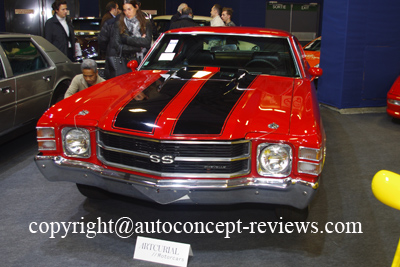 |
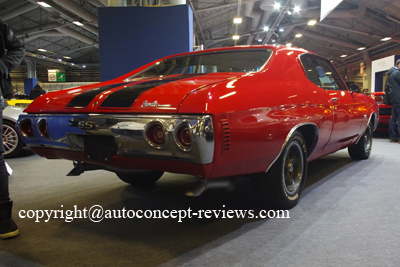 |
| |
1942 Breguet Type A2 Electric sold for 41,720 € -
|
| Following the armistice between France and Germany in 1940, the French aircraft producers were forced to reconvert into other activities. It is in this context that Louis Breguet, the famous aircraft manufacturer, went into the production of an electric car, with a most unusual shape and design. The design of this automobile was strongly influenced by aviation and its body was in duralium and its shape looked like a plane without wings. Fitted with a Paris-Rhone engine powered by six 12-volt batteries, it had three forward speeds, and one rear. The car on offer belongs to a descendant of Louis Breguet and is in a striking state of conservation, having benefited from an old repaint from some time ago. The interior, very close to an airplane cockpit, is complete and the seats have been redone. The owner told us that the car was last driven by its erstwhile owner during the 1990s. To his knowledge, a similar car is in the Louwman collection in the Netherlands, while two others remain with the family. A remarkable testimony of a period when ingenuity compensated for shortages, this rare Breguet deserves to be on the road again. (source of excerpt Artcurial) |
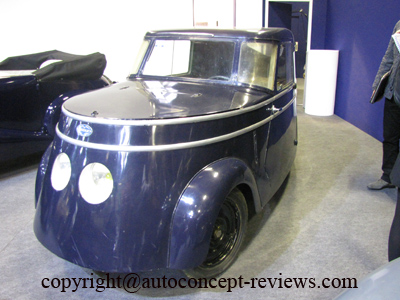 |
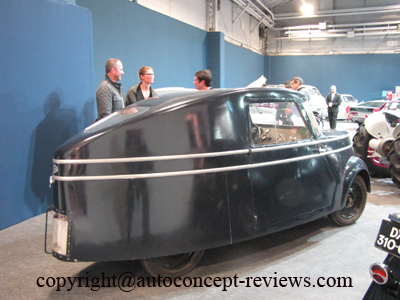 |
| |
1967 Honda S800 Coupé sold for 39,336 €
|
| Registered on 2 October 1967, this Honda S800, which has just benefited from a comprehensive restoration, is in a particularly enviable condition. Its history is quite clear, the car has known only three owners in the past 37 years and its current owner, a former professional, acquired the car in 2003. He undertook in recent years a complete restoration. The body was completely disassembled and stripped for a refurbishment and of course, a new coat of grey. The interior was entrusted to an upholsterer. The black upholstery, the carpets and the headliner have been redone. The numerous mechanical works include the refurbishment of the engine with new pistons, as well of the clutch, the brakes and the radiator. The car is in a beautiful condition, and the mechanicals still need to be honed. (source of excerpt Artcurial) |
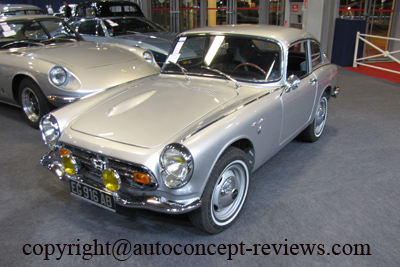 |
 |
| |
1974 Citroen SM Injection sold for 35,760 €
|
The SM, Citroen's only foray into the GT domain, was an indisputable success sadly thwarted by the economic circumstances of the time. Only 12,920 examples were produced. The avant-garde technique used in its development, notably for the suspension and variable assisted power steering, made the SM a genuine collector car from the day it left the factory. The Citroën SM in offer was built in May 1974 and delivered to Citroen dealer Enrico Masi in Prato, Italy in its current gold leaf colour. (source of excerpt Artcurial)
related review : Citroen SM Prototype |
 |
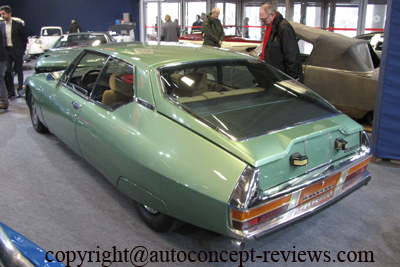 |
| |
1957 Messerschmitt KR 200 sold for 29,800 €
|
 |
The Messerschmitt "KR 175" was launched at the 1953 Geneva Motor Show, "KR 175" being short for "Kabinenroller", German for "scooter with cabin", of 175cc. The access 'on board' was through a canopy that opened to one side, just like in fighter planes. The two-stroke single-cylinder engine was originally from Sachs. The Messerschmitt KR gained power in 1955 with a bigger engine of 191cc, producing 9.5bhp, mated to a 4-speed gearbox. (source of excerpt Artcurial) |
| |
1956 Dodge Sierra D500 Station Wagon sold for 20,264 €
|
| - A rare model in Europe - Beautiful presentation - Spacious interiors, superb finish - Coming from the collection of an enthusiast from South of France - No reserve Sold new in the United States, this Dodge Sierra was bought in 2003, when it was in Michigan, by an English collector who imported it to his country. The car was then in its original condition, and he entrusted a specialized workshop, which did a superb restoration of the body and the interior. Ten years later, in 2014, it was bought by our collector. With its spacious interior and large bench seats, big enough to accommodate six people comfortably, he wanted to use it to transport his grandchildren during holidays in the Luberon region. (source of excerpt Artcurial) |
 |
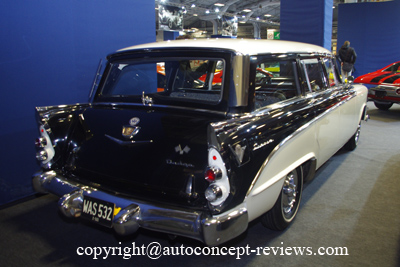 |
| |
2000 Rover Mini 40th Anniversary sold for 16,688 € |
This Mini 40th Anniversary belonged to just two owners, two women, the first of whom, a German, acquired the car from the dealership in Aachen. The car covered its first 78,000 kilometers with the first owner and was serviced at the official dealer network. The second owner, living in the very chic 8th arrondissement of Paris, acquired the car in January 2013. It was registered in France on 26 July the same year. In Paris it was maintained on a regular basis by the well-known specialist My Mini Revolution, where it underwent a comprehensive mechanical overhaul during October/November 2016, including the replacement of the roof and the fog lamps and a renovation of the bodywork, thanks to typical Parisian dents (invoice totaling €8000). In four years, the Parisian owner drove the car a bare 4,000 km. (source of excerpt Artcurial) |
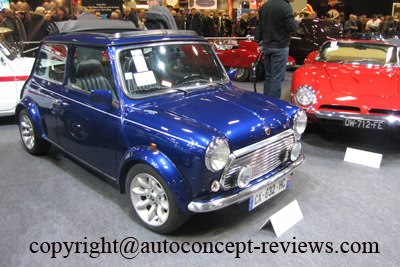 |
| |
1957 Zundap Janus 250 sold for 16,688 €
|
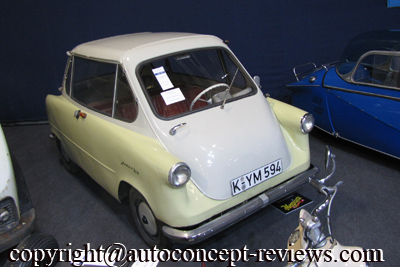 |
Only car produced by Zündapp - The German company, famous for its motorcycles, built its only car from 1957 to 1958. A microcar with a most original design featuring two doors: one at the front, the other at the rear. In profile, it is difficult to distinguish the rear from the front, which is why it was called after the Roman god Janus, as he is always represented with two heads. It was powered by a two-stroke single-cylinder 247cc engine, located in the center of the car, and mated to a 4-speed gearbox. The two benches for the occupants, placed back to back, are situated on either side of the engine. (source of excerpt Artcurial) |
| |








